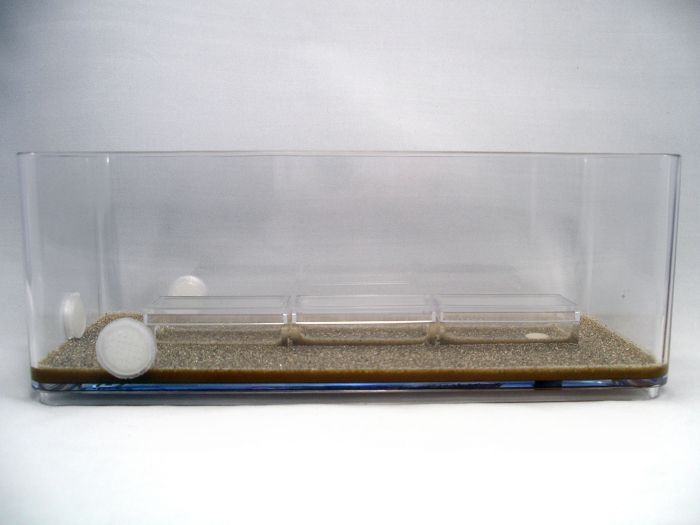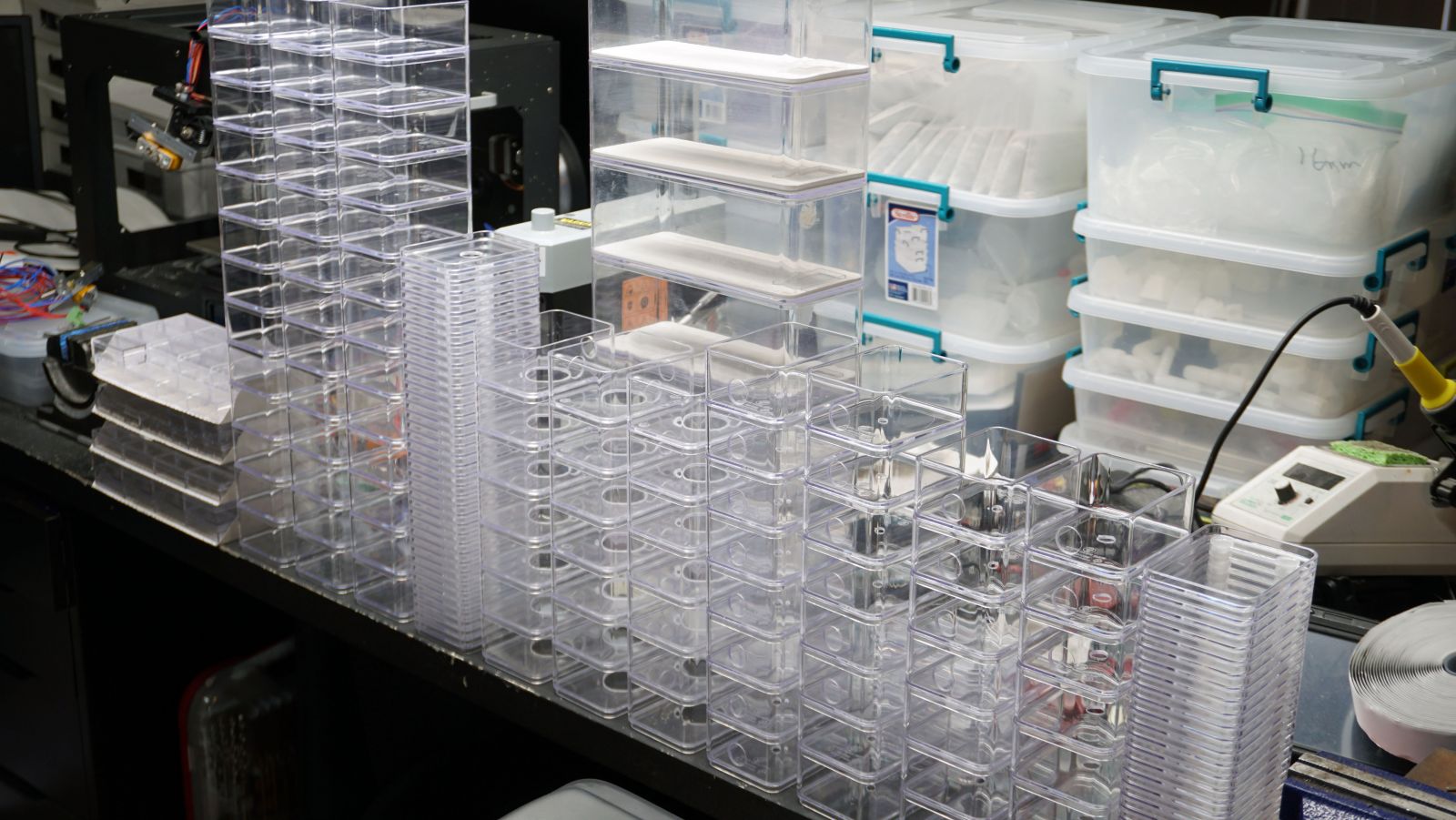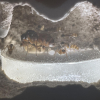- Formiculture.com
- Forums
- Gallery
- Members
- Member Map
- Chat

177 replies to this topic
#101
 Offline
-
Posted April 14 2018 - 2:07 PM
Offline
-
Posted April 14 2018 - 2:07 PM
Well wrong pic.
#102
 Offline
-
Posted April 14 2018 - 7:29 PM
Offline
-
Posted April 14 2018 - 7:29 PM
Is this the box that you said they discontinued in the vertical nest thread?I made a larger version of this simple formicarium, just like the starter version, but with three chambers. It's basically structured like test tube in a foraging container, only with a much better hydration system and sectioned off chambers. These prototypes were actually made for Antking117. I'll be making more that I can test out myself soon.
#103
 Offline
-
Posted April 15 2018 - 1:05 AM
Offline
-
Posted April 15 2018 - 1:05 AM
No, it's the taller one.
#105
 Offline
-
Posted April 17 2018 - 11:28 PM
Offline
-
Posted April 17 2018 - 11:28 PM
If I may ask, where do you obtain these various clear stackable containers depicted here and in various other posts on this thread? I have been looking, but the only place I have found anything similar is The Container Store. Thanks for any guidance you can provide.
Lots of formicariums
#107
 Offline
-
Posted April 18 2018 - 12:18 PM
Offline
-
Posted April 18 2018 - 12:18 PM
Those look like boxbox from The Container Store.
If I may ask, where do you obtain these various clear stackable containers depicted here and in various other posts on this thread? I have been looking, but the only place I have found anything similar is The Container Store. Thanks for any guidance you can provide.
Lots of formicariums
#108
 Offline
-
Posted April 18 2018 - 3:47 PM
Offline
-
Posted April 18 2018 - 3:47 PM
How well do ants in these do vs. test tubes?
Quite a bit better. The main reason I use these is because they are WAY less work than test tubes. They also can't randomly flood. They also allow for feeders.
If I may ask, where do you obtain these various clear stackable containers depicted here and in various other posts on this thread? I have been looking, but the only place I have found anything similar is The Container Store. Thanks for any guidance you can provide.
That's the same place I get them. Getting them from the manufacturer would cost WAY too much for shipping. Container Store if expensive, but paying the shipping from Thailand is a lot more expensive.
#109
 Offline
-
Posted April 18 2018 - 5:11 PM
Offline
-
Posted April 18 2018 - 5:11 PM
Wow, that is so many containers. Do you even have to pay shipping once you buy that many? Also, just wondering, what's the gigantic hole in the side for, and does this mean that you fixed the whole silicone issue?Lots of formicariums
#110
 Offline
-
Posted April 18 2018 - 5:43 PM
Offline
-
Posted April 18 2018 - 5:43 PM
The hole is for adapters or connectors. It's all in the thread. I don't have the boxes shipped to me, I pick them up. Silicone is still a problem if you leave it touching the tiles for too long.
#112
 Offline
-
Posted April 18 2018 - 8:11 PM
Offline
-
Posted April 18 2018 - 8:11 PM
Maybe I missed it on the posts somewhere. How does oxygen get in these small sets? There set up for moisture for months. So if I put them in my cabinet and walk away for two months with my new queen.
#113
 Offline
-
Posted April 18 2018 - 8:31 PM
Offline
-
Posted April 18 2018 - 8:31 PM
I made a replica and so far my Novomessor love it. I'm going to try to move some of my Camponotus queens into these. How much would you sell one with a large water basin at the bottom with three smaller formicaria on top?
The cost of three nests - $90.
Maybe I missed it on the posts somewhere. How does oxygen get in these small sets? There set up for moisture for months. So if I put them in my cabinet and walk away for two months with my new queen.
The oxygen enters through the cracks between the container and the lid. Eventually I will have better lids designed that provide more ventilation.
#114
 Offline
-
Posted April 19 2018 - 1:45 AM
Offline
-
Posted April 19 2018 - 1:45 AM
I while back I bought a kiln. It's a pretty small one, because they're very expensive. This little tiny thing was almost $500 dollars.
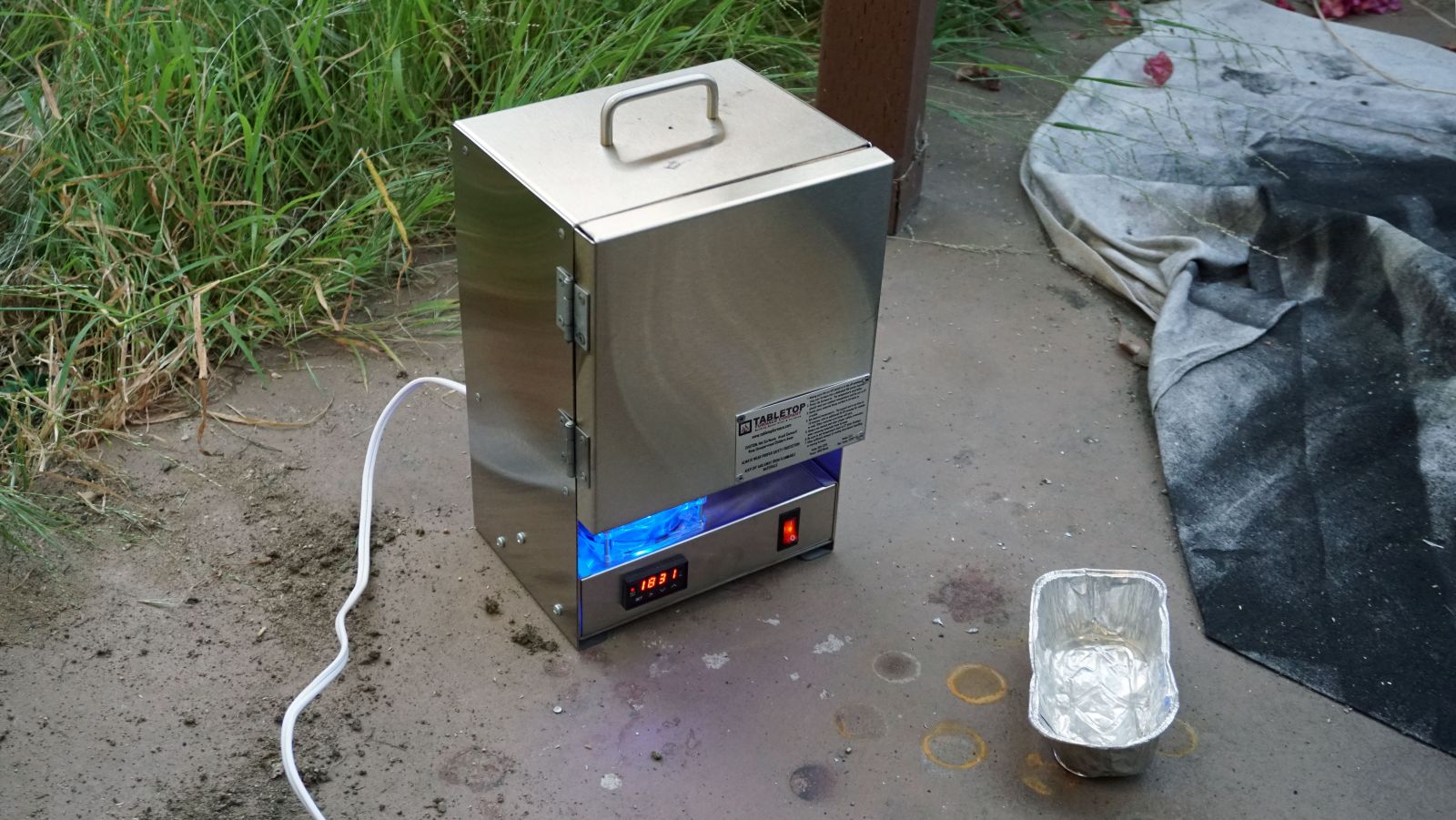
It's good enough for most things I work with. It doesn't get as hot as larger kilns, but it gets up to 2300 F, which is hot enough to melt most metals, and fuse most clays.
I bought a few different types of clay. I got three low-fire clays, one that fires almost white, another that fires to a redish brown, and a talc based clay that fires to pure white. I also got one high-fire clay (not pictured here) that fires to almost black. The reason I got the high-fire was because they had no low-fire clays that fired that dark. The black clay is actually red before it's fired, and it stains almost everything it touches.
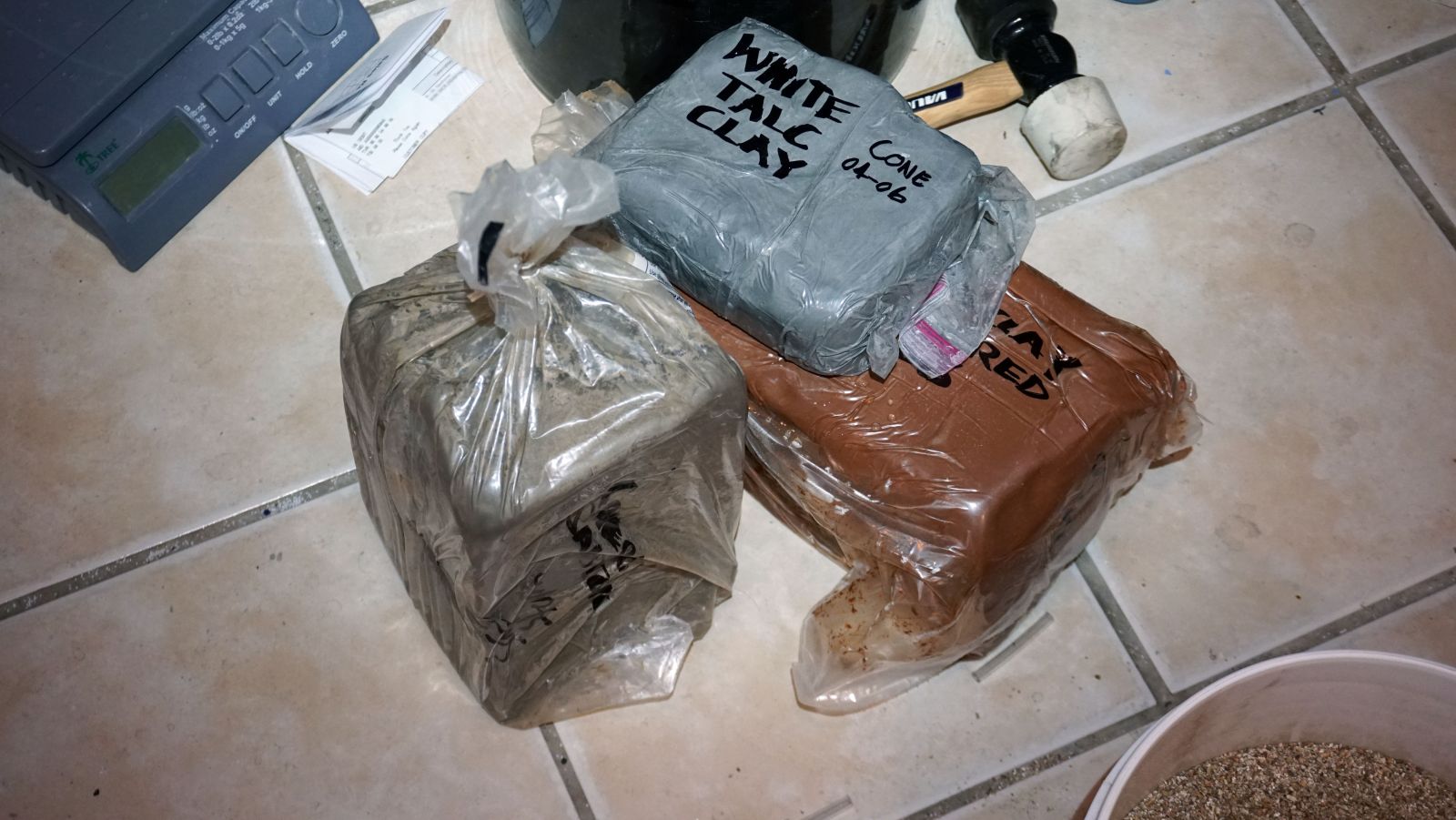
Here are some absorption tests I did on two of the clays.
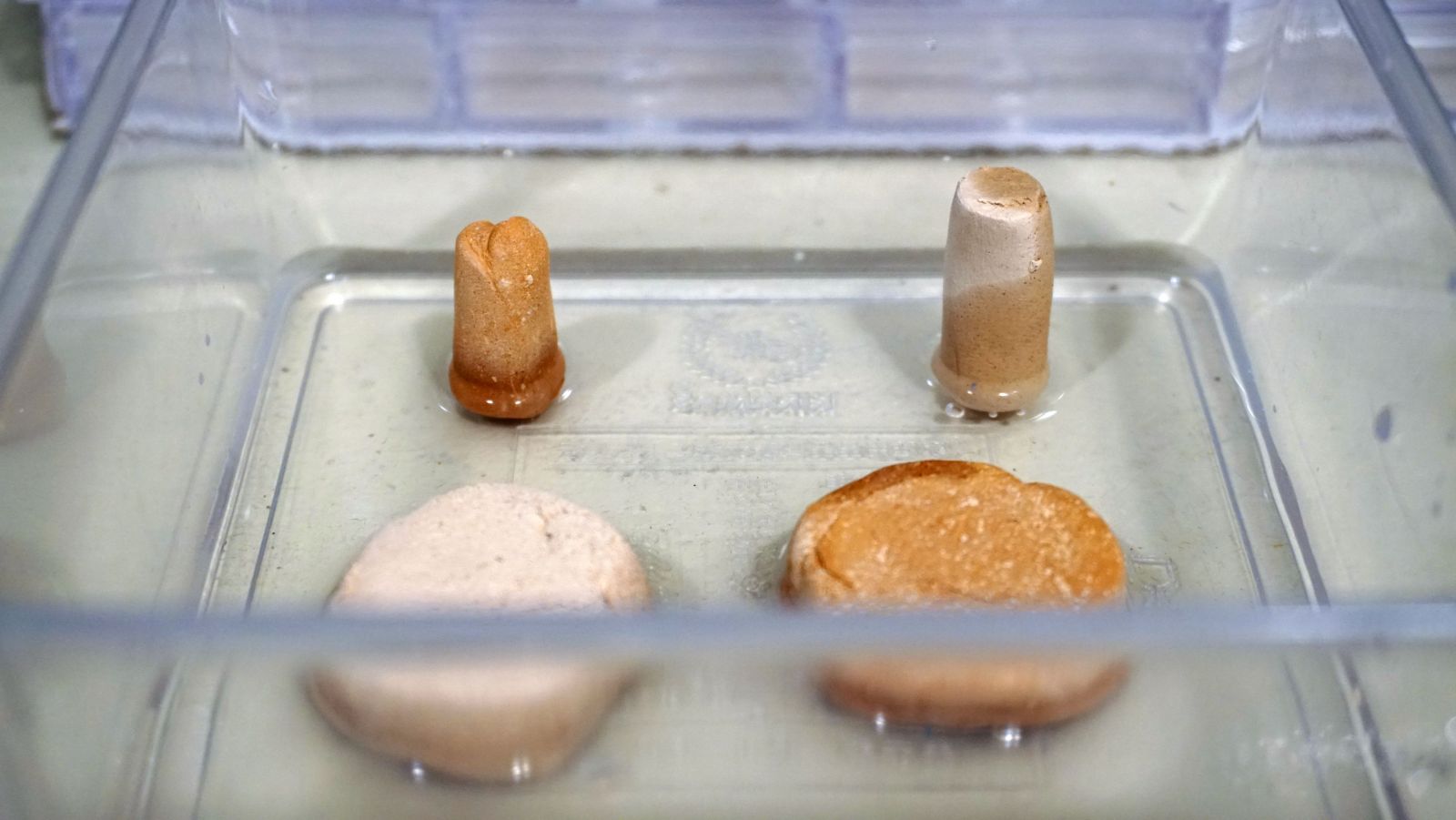
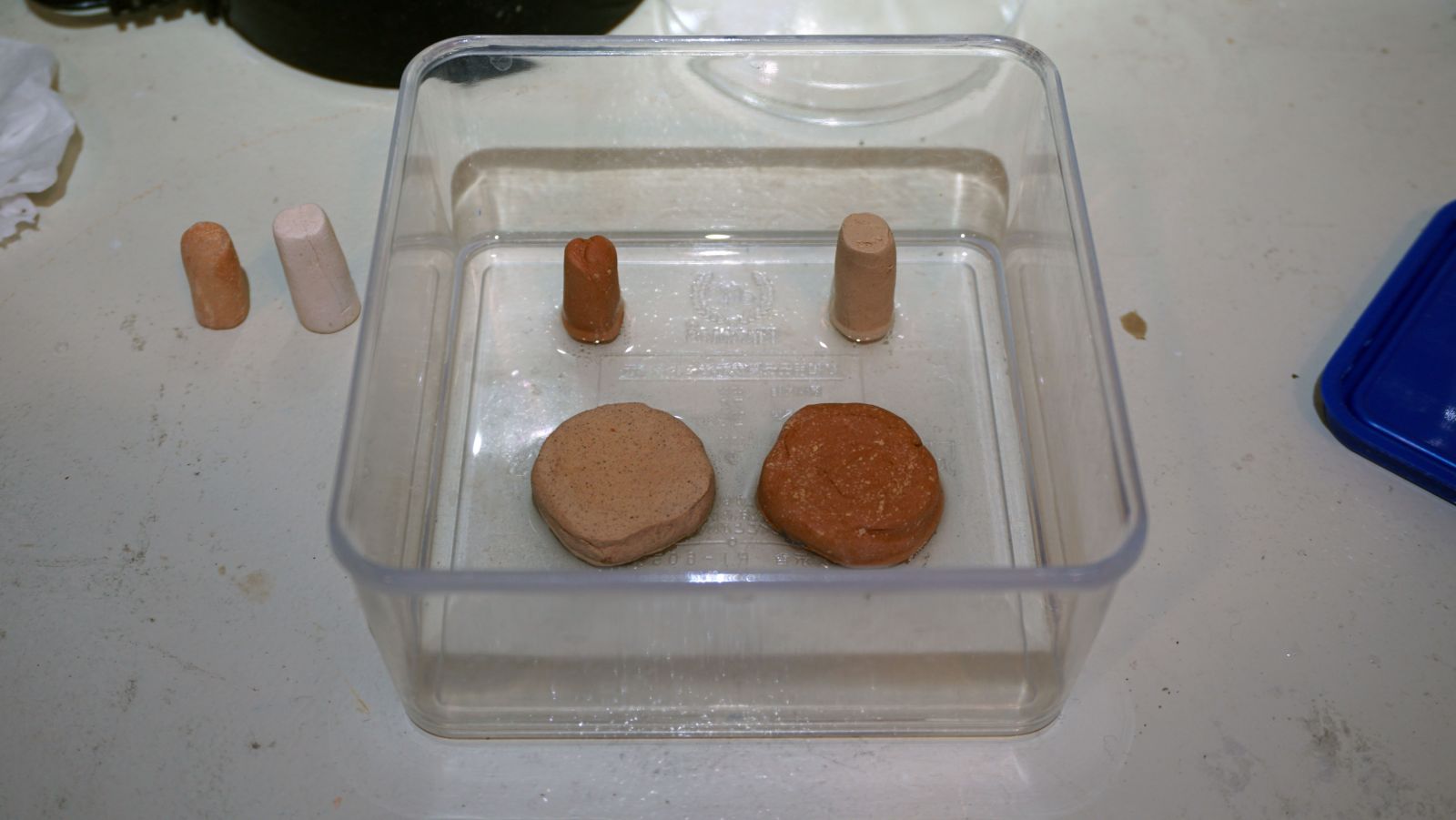
They both seem to wick up water a little less than the tiles I've been using. They might work, but I really wish they were a little more absorbent. I tried firing them at different temperatures, but it didn't seem to make much of a difference.
Using a blender, I made some clay slip to try casting a tile.
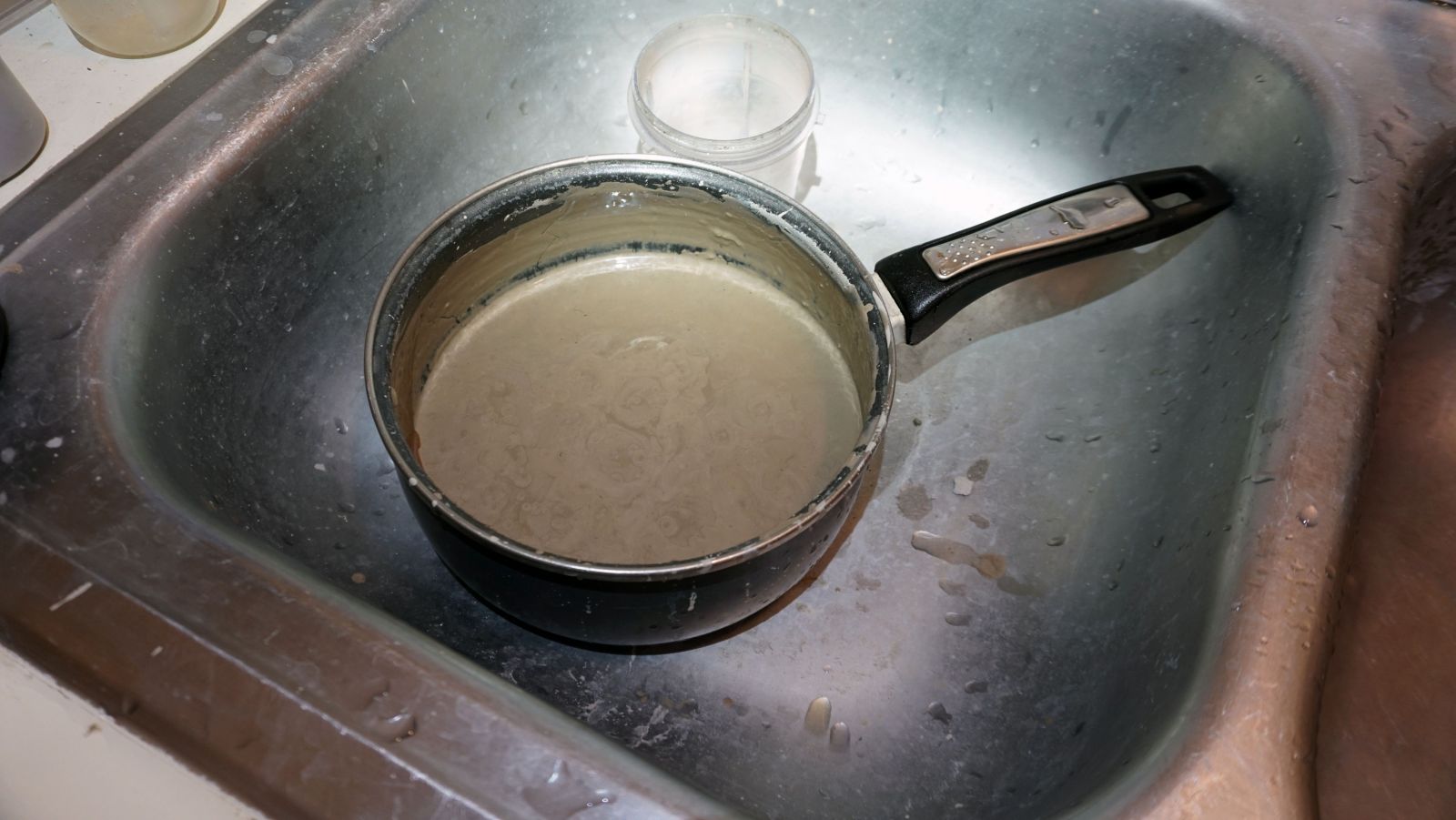
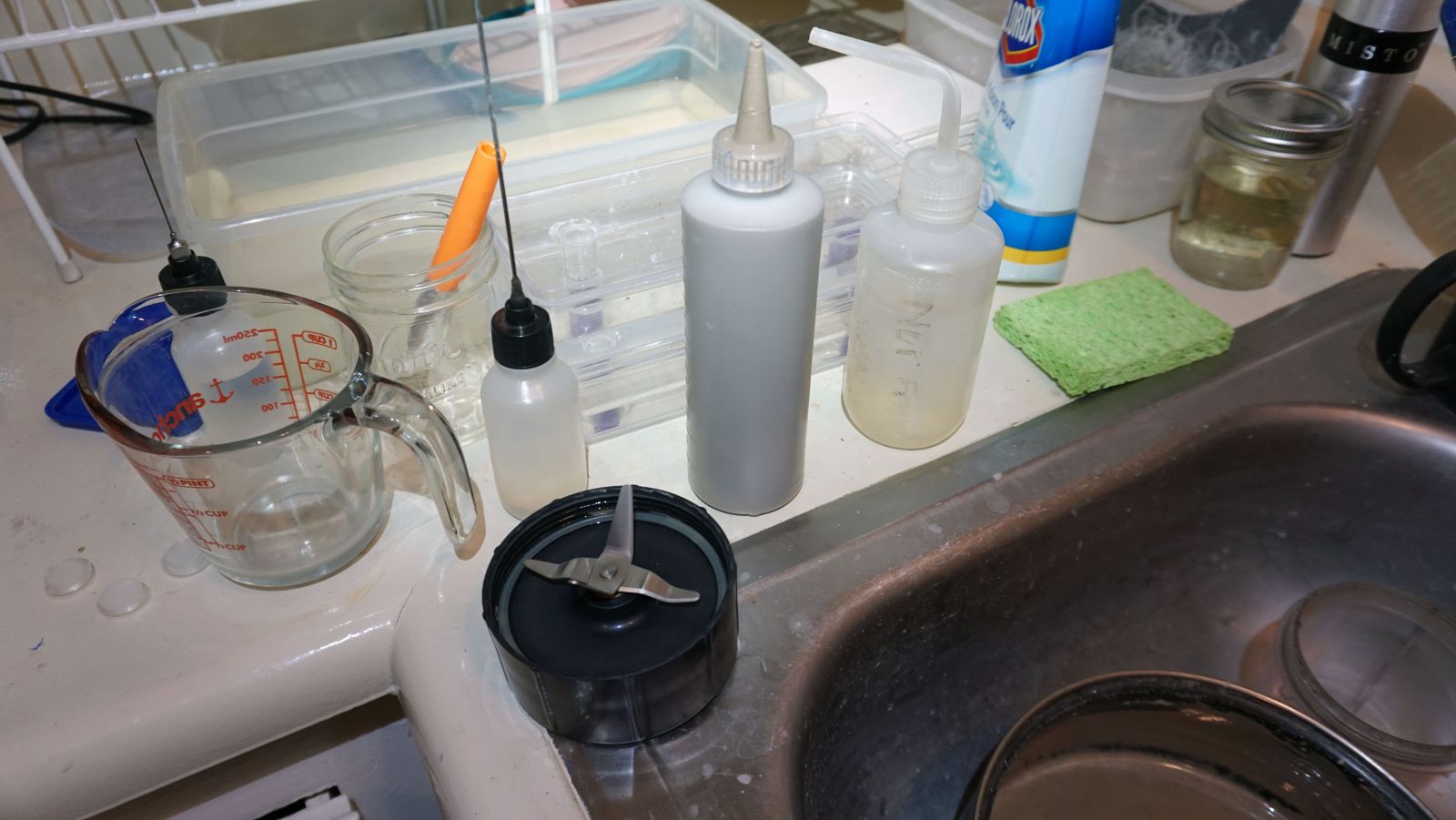
I first tried pouring some of it into petri dishes, but quickly realized you can't do this, because it would take forever for the water to evaporate. I totally forgot that clay slip molds are made from plaster just for this reason.
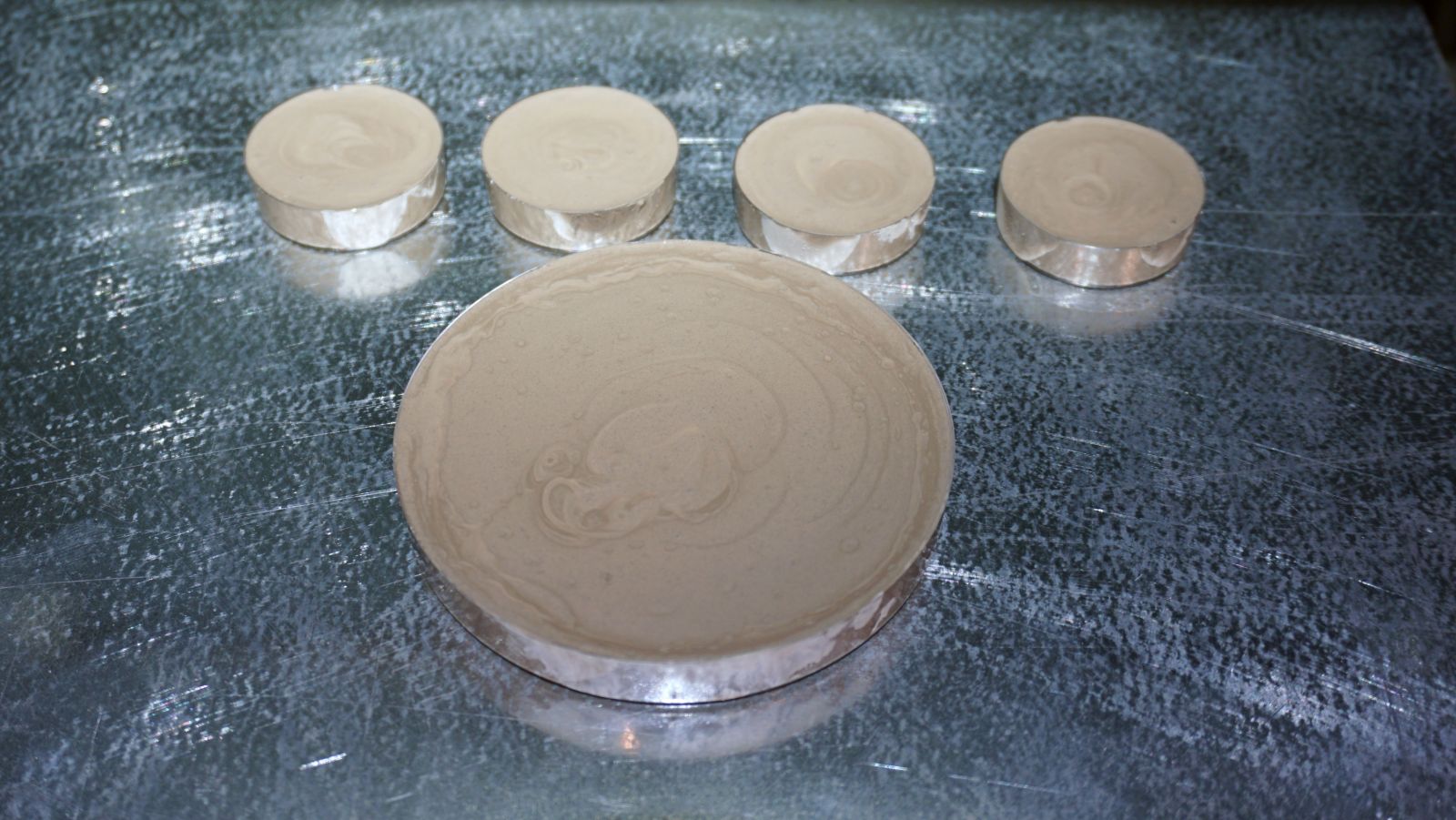
.
So instead I decided to make a hold from Hydrostone.
I put my mold box together and used clay to hold a petri dish to the counter so I could pour Hydrostone around it.
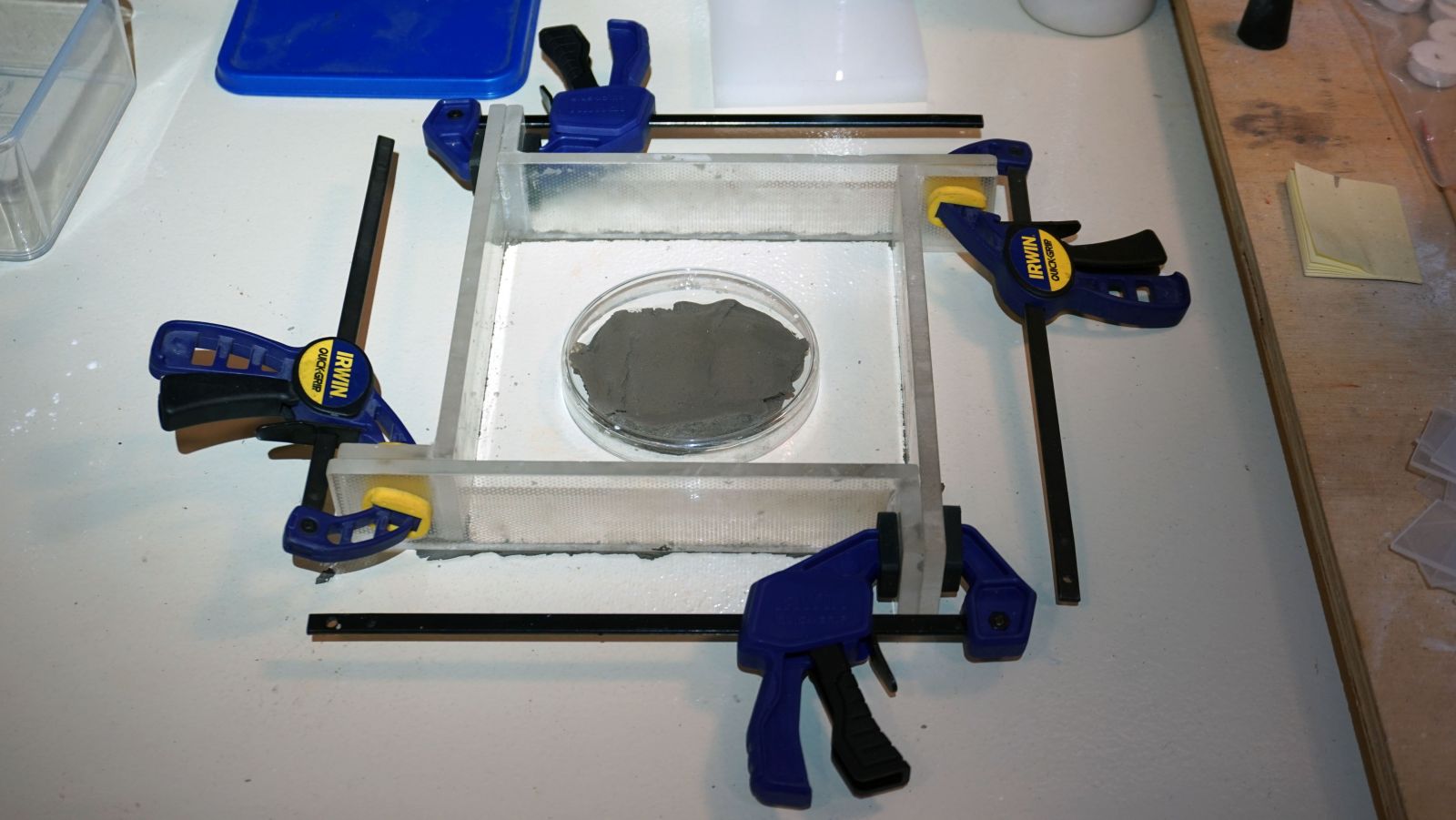
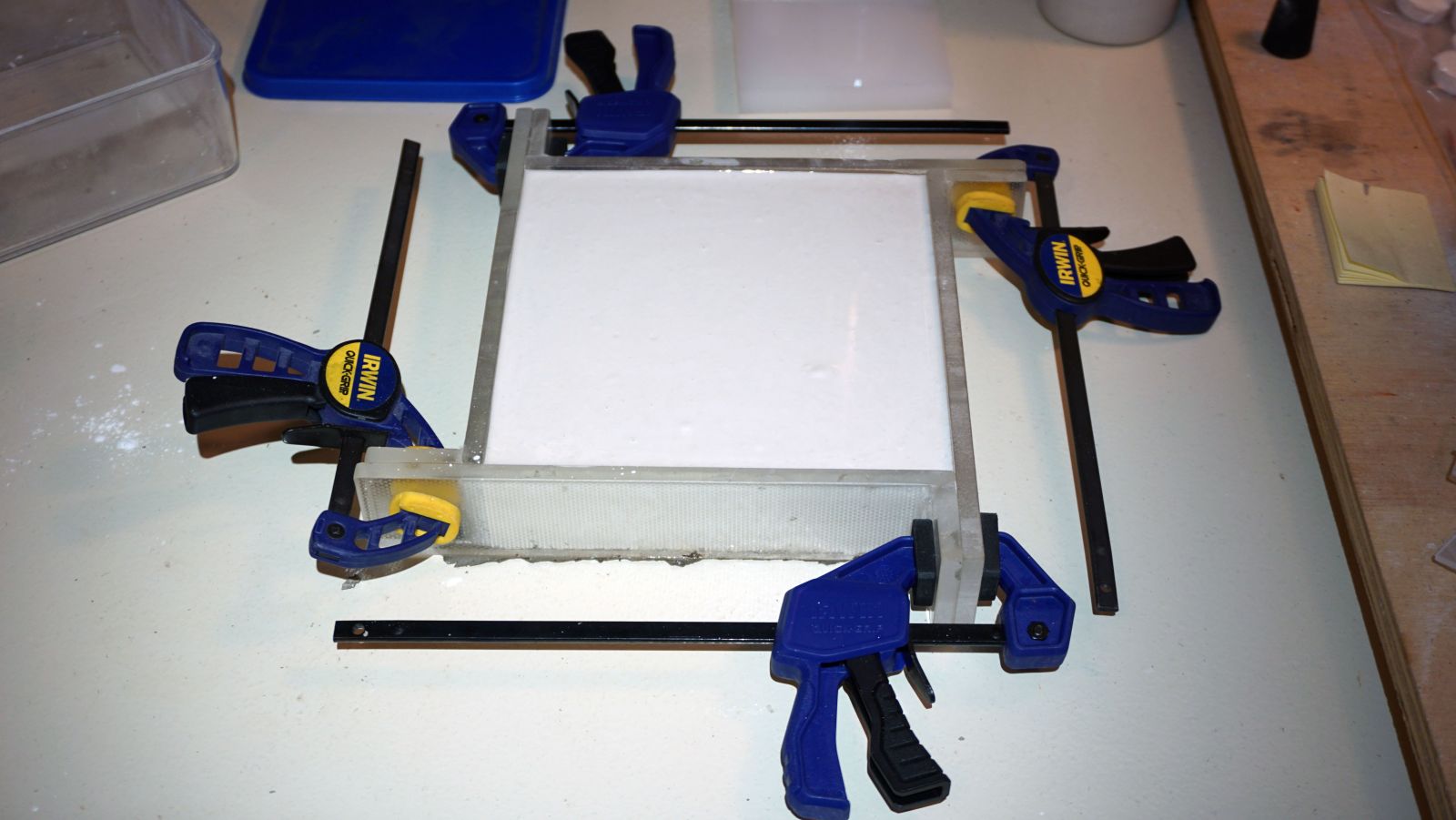
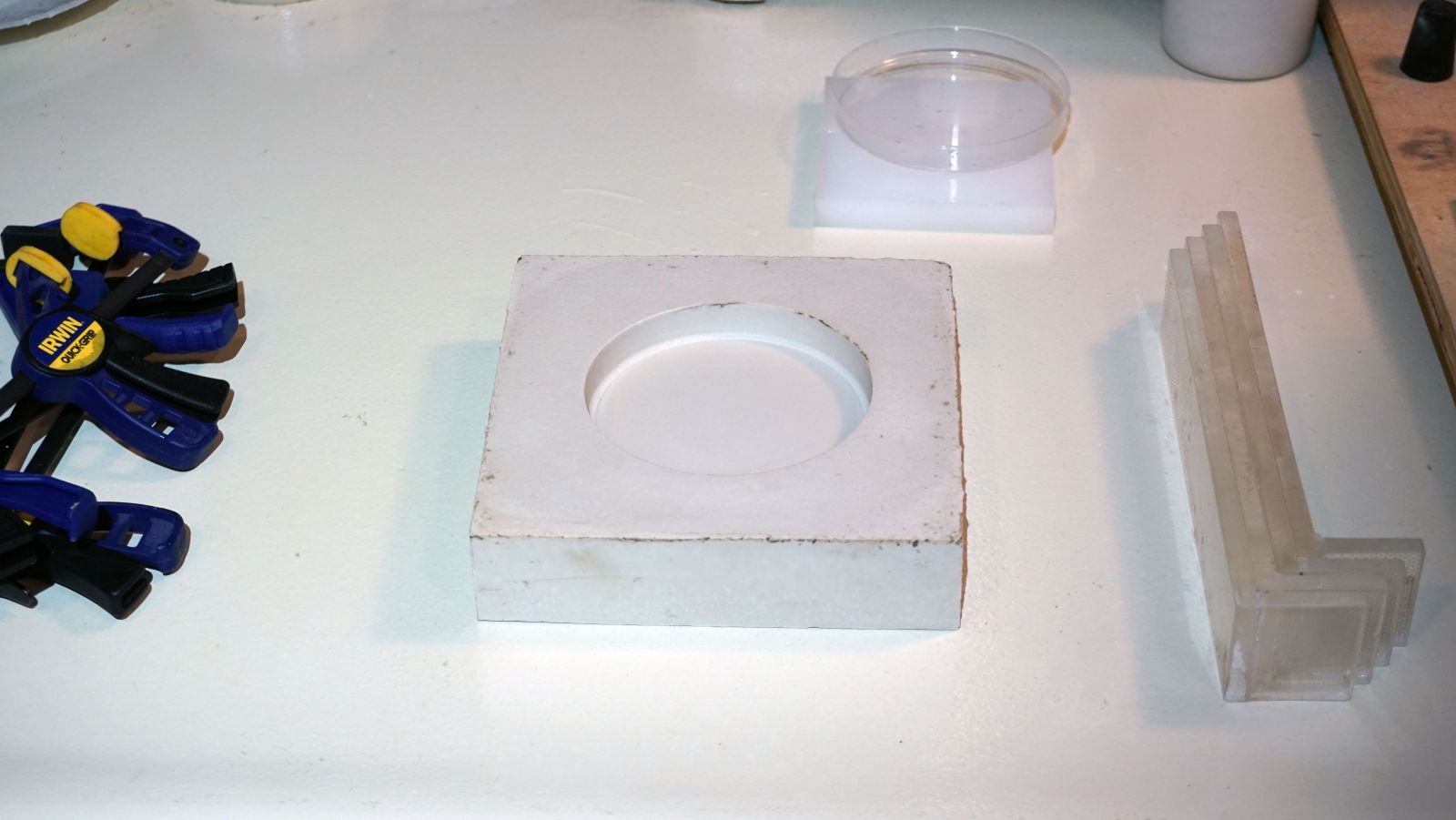
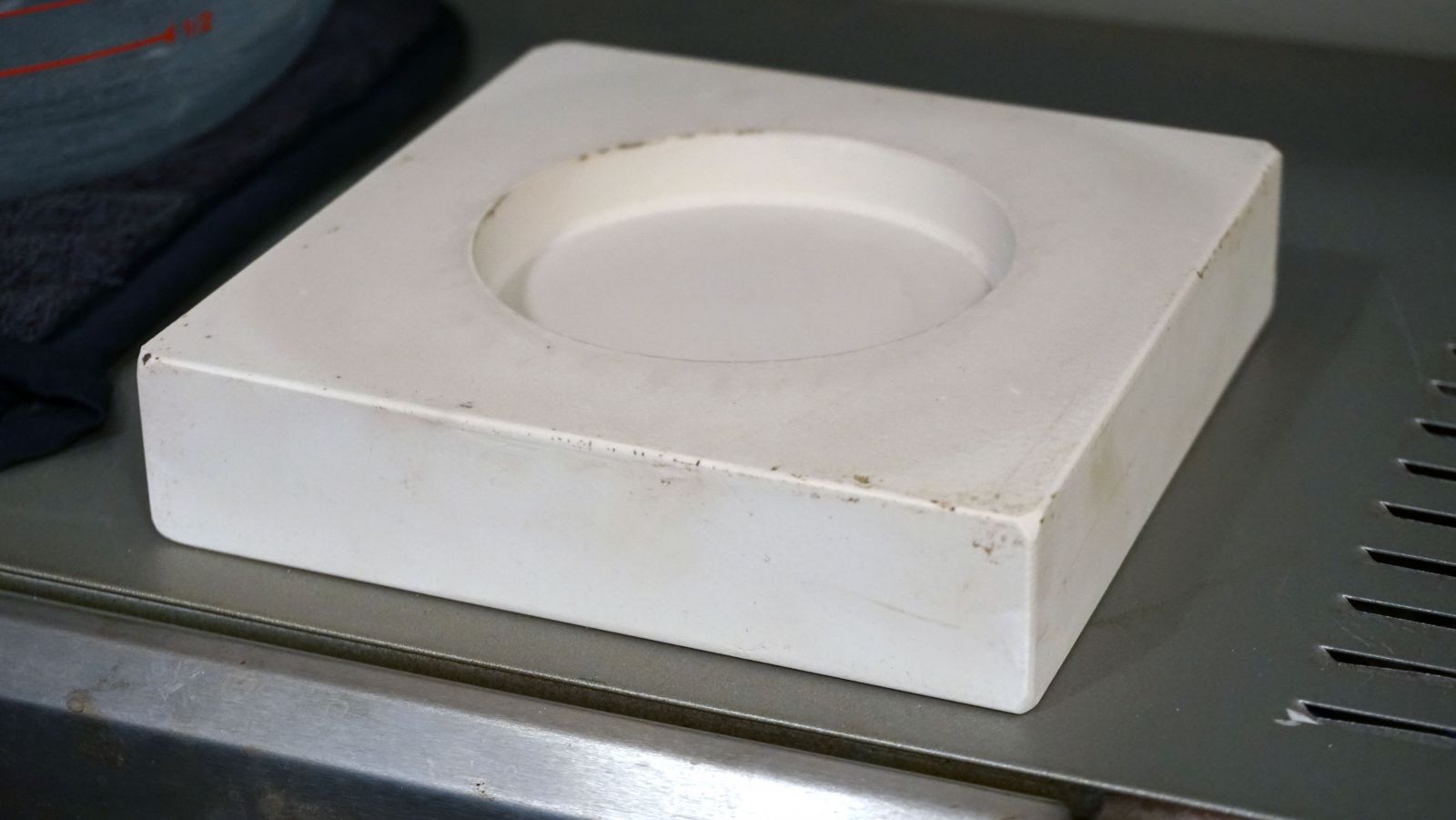
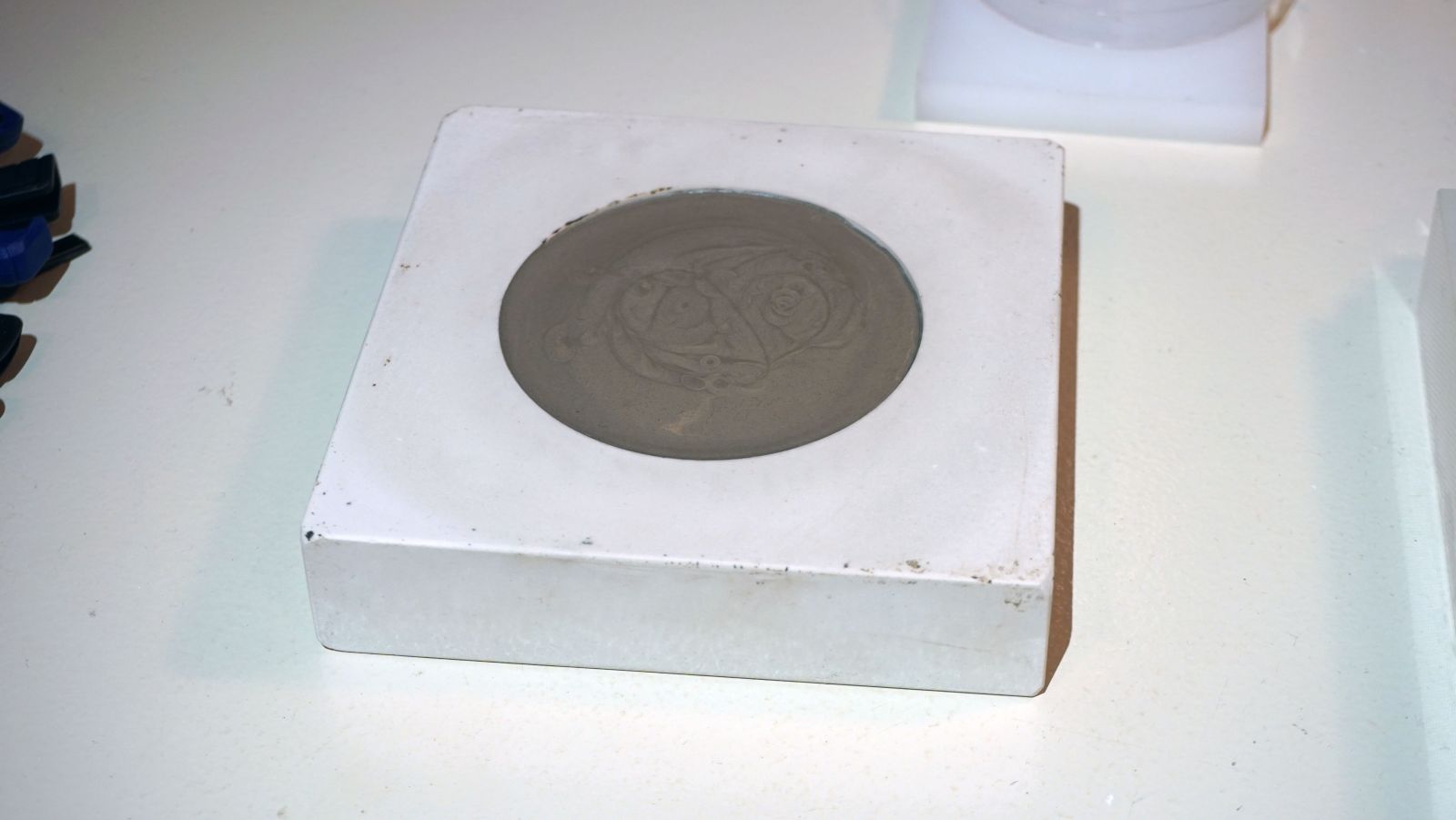
As you can see here, clay slip just shrinks way too much to try to pour solid objects without a mold that has room for extra clay to make up for it.
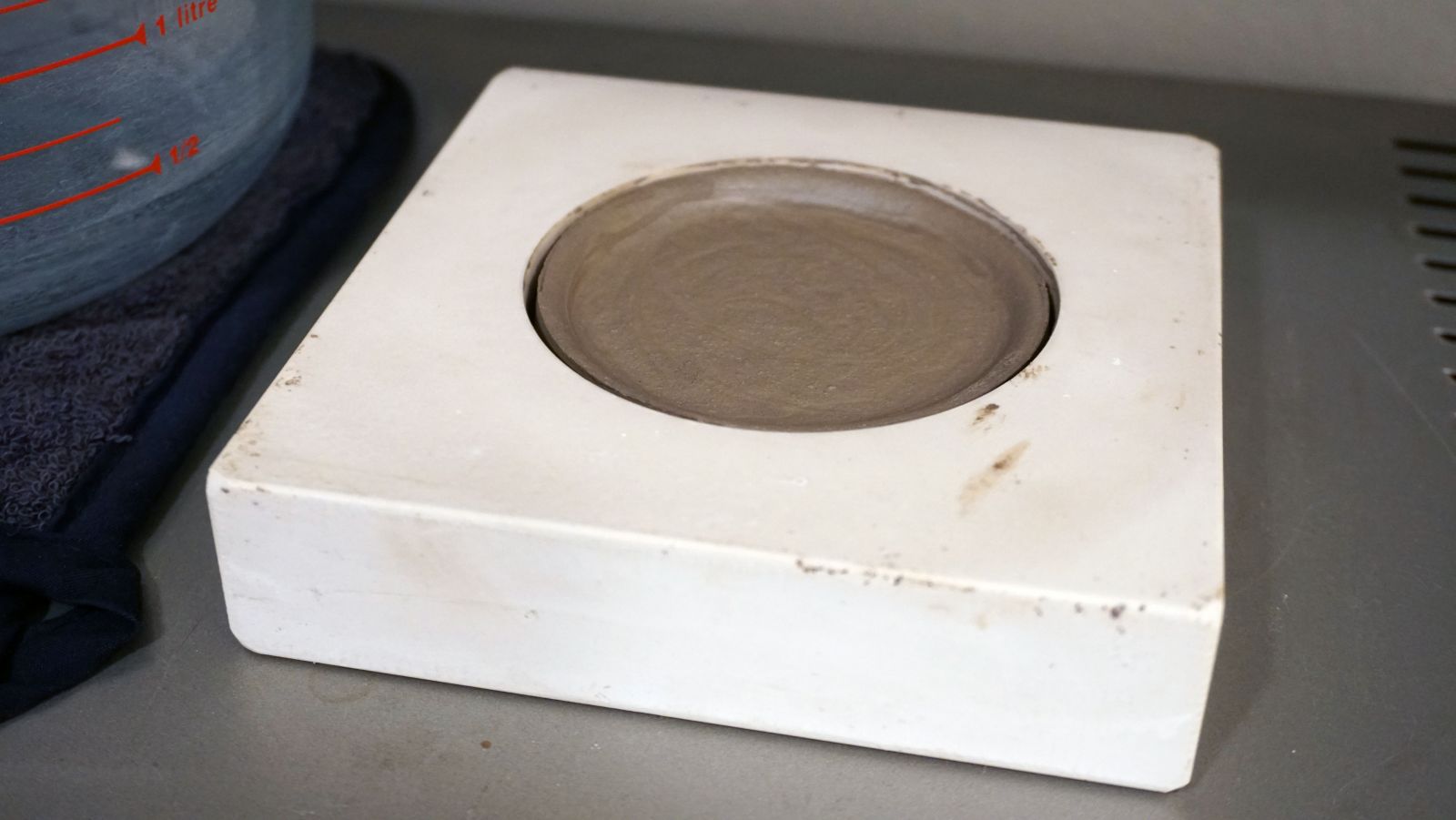
Finally, I just took regular clay and pressed it into petri dishes. This worked just fine. Once it was dry, it shrunk enough for them to fall right out.
Here they are after being fired. These were made from the redish brown clay (even though it looks grey in this picture), which would be good for formicariums with a brown-colored floor.
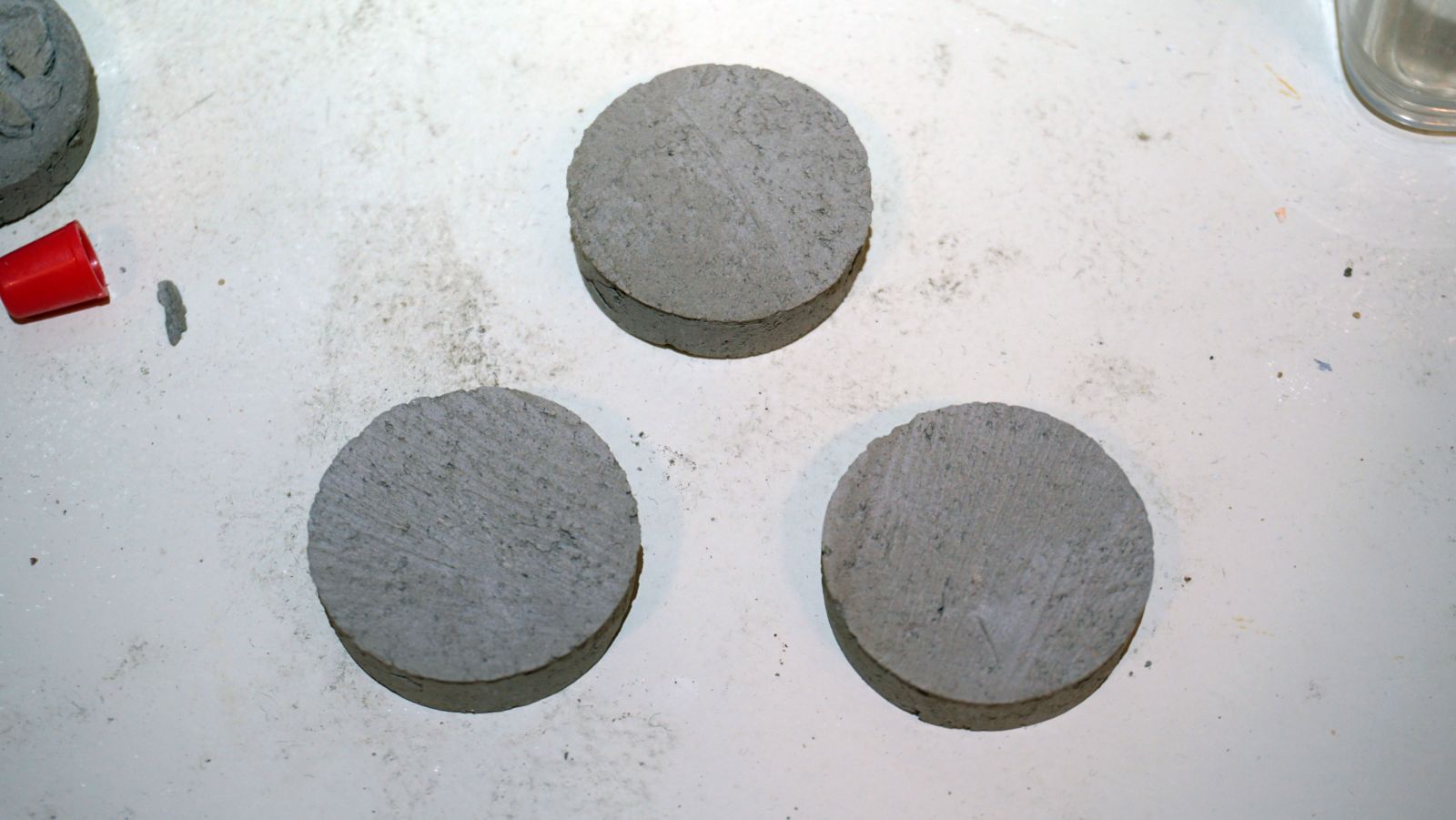
Here they are after being cut into little tile rounds.
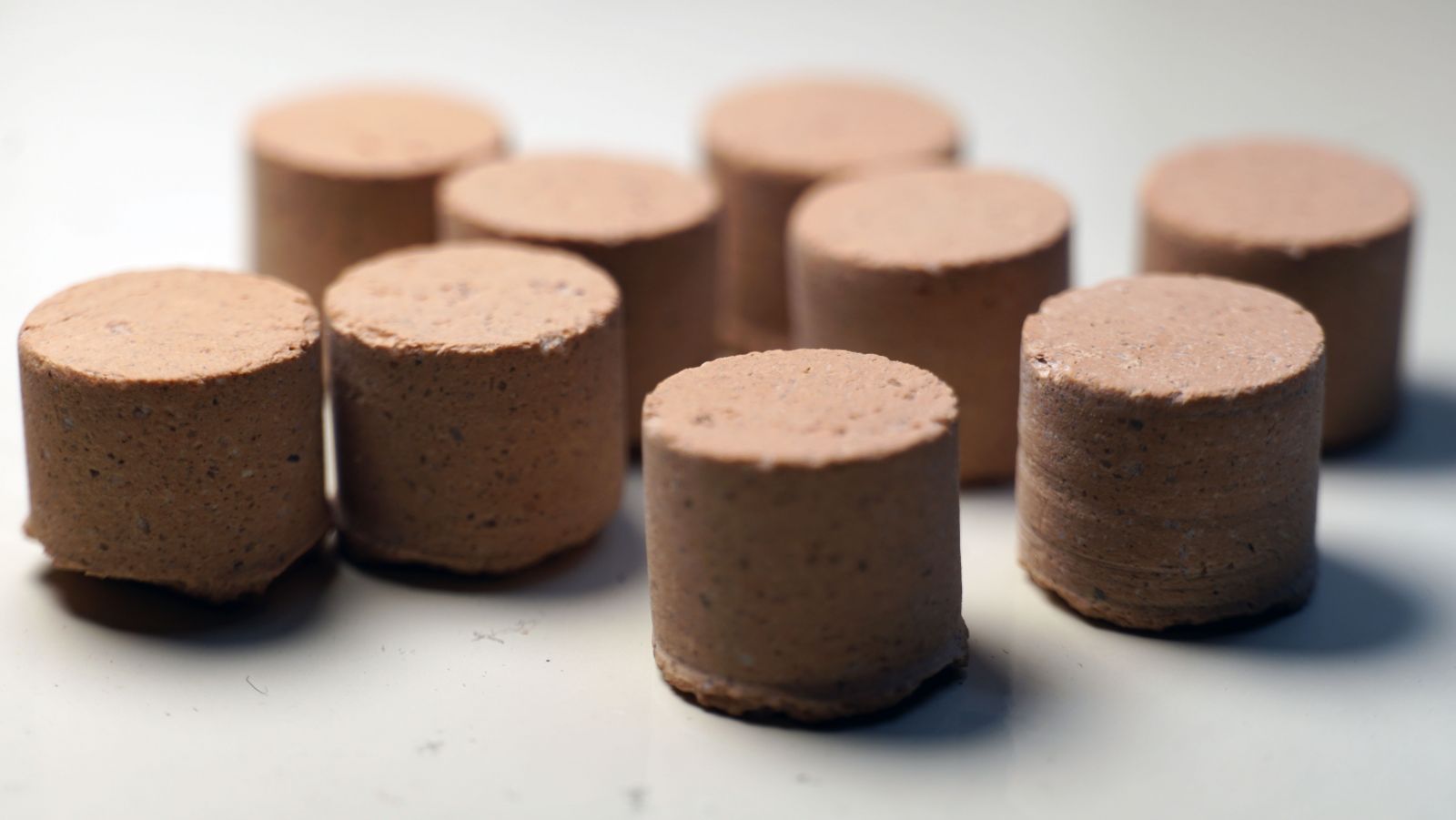
Now if only I could get something that will match black floors.

It's good enough for most things I work with. It doesn't get as hot as larger kilns, but it gets up to 2300 F, which is hot enough to melt most metals, and fuse most clays.
I bought a few different types of clay. I got three low-fire clays, one that fires almost white, another that fires to a redish brown, and a talc based clay that fires to pure white. I also got one high-fire clay (not pictured here) that fires to almost black. The reason I got the high-fire was because they had no low-fire clays that fired that dark. The black clay is actually red before it's fired, and it stains almost everything it touches.

Here are some absorption tests I did on two of the clays.


They both seem to wick up water a little less than the tiles I've been using. They might work, but I really wish they were a little more absorbent. I tried firing them at different temperatures, but it didn't seem to make much of a difference.
Using a blender, I made some clay slip to try casting a tile.


I first tried pouring some of it into petri dishes, but quickly realized you can't do this, because it would take forever for the water to evaporate. I totally forgot that clay slip molds are made from plaster just for this reason.

.
So instead I decided to make a hold from Hydrostone.
I put my mold box together and used clay to hold a petri dish to the counter so I could pour Hydrostone around it.





As you can see here, clay slip just shrinks way too much to try to pour solid objects without a mold that has room for extra clay to make up for it.

Finally, I just took regular clay and pressed it into petri dishes. This worked just fine. Once it was dry, it shrunk enough for them to fall right out.
Here they are after being fired. These were made from the redish brown clay (even though it looks grey in this picture), which would be good for formicariums with a brown-colored floor.

Here they are after being cut into little tile rounds.

Now if only I could get something that will match black floors.
- noebl1 and KBant like this
#115
 Offline
-
Posted April 19 2018 - 2:52 AM
Offline
-
Posted April 19 2018 - 2:52 AM
I had some clay dirt i got from the park near my old place in Costa Mesa, so I decided to try firing that.
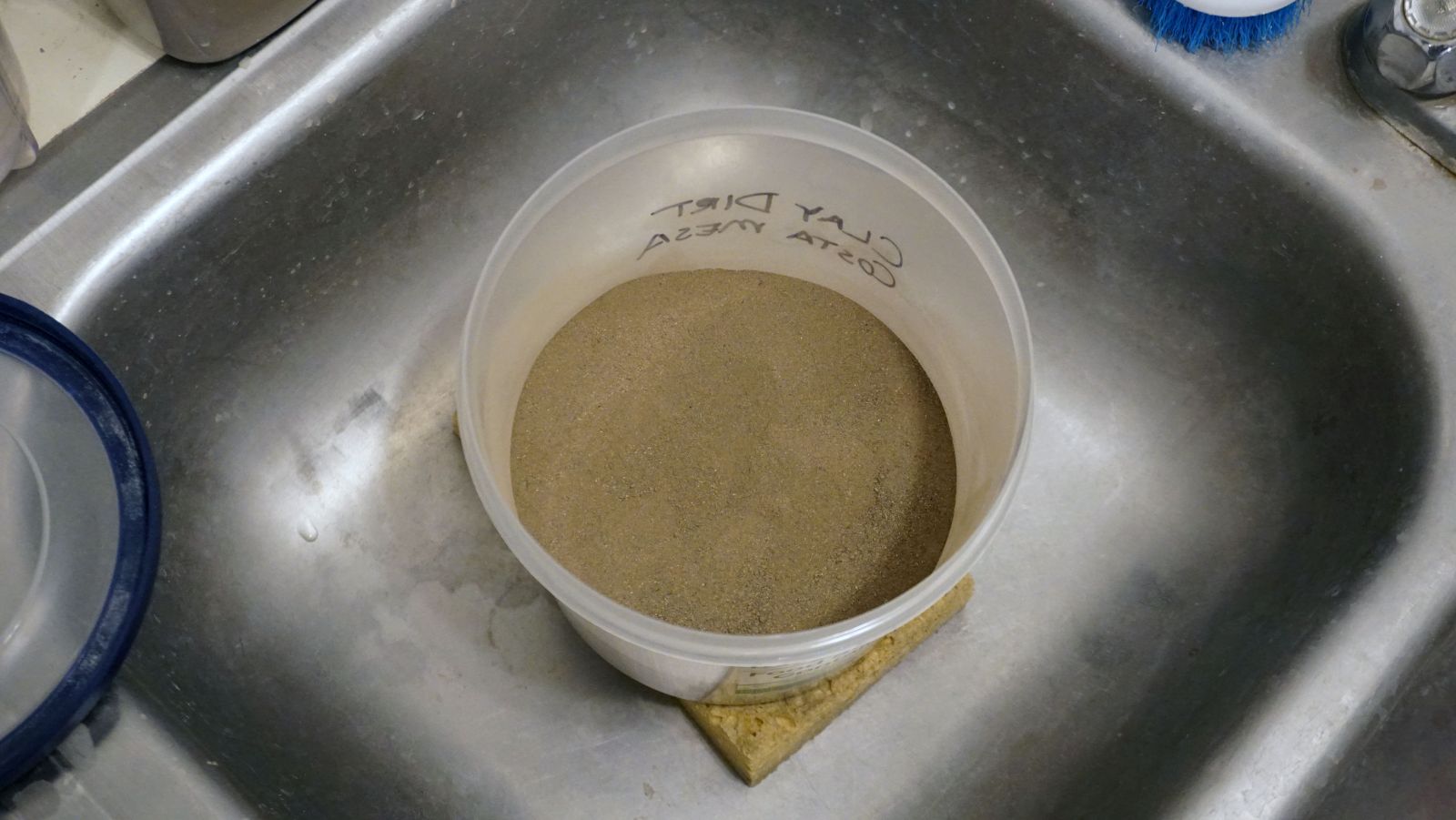
I first tried using my tile mold again, and since it was slightly sandy, I knew it wouldn't shrink as much as that pure clay slip did. I also got a lot of the water out of it beforehand.
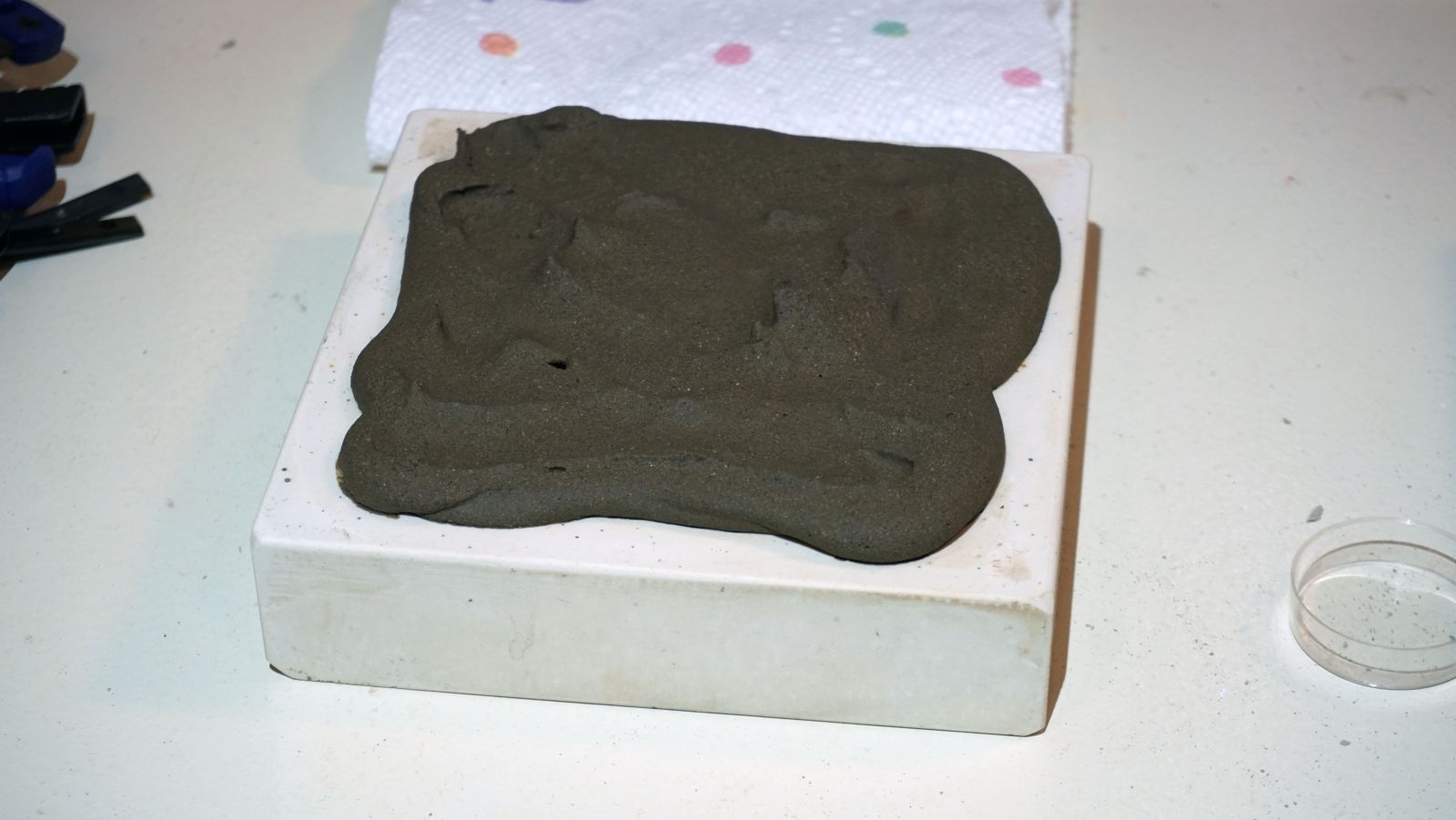
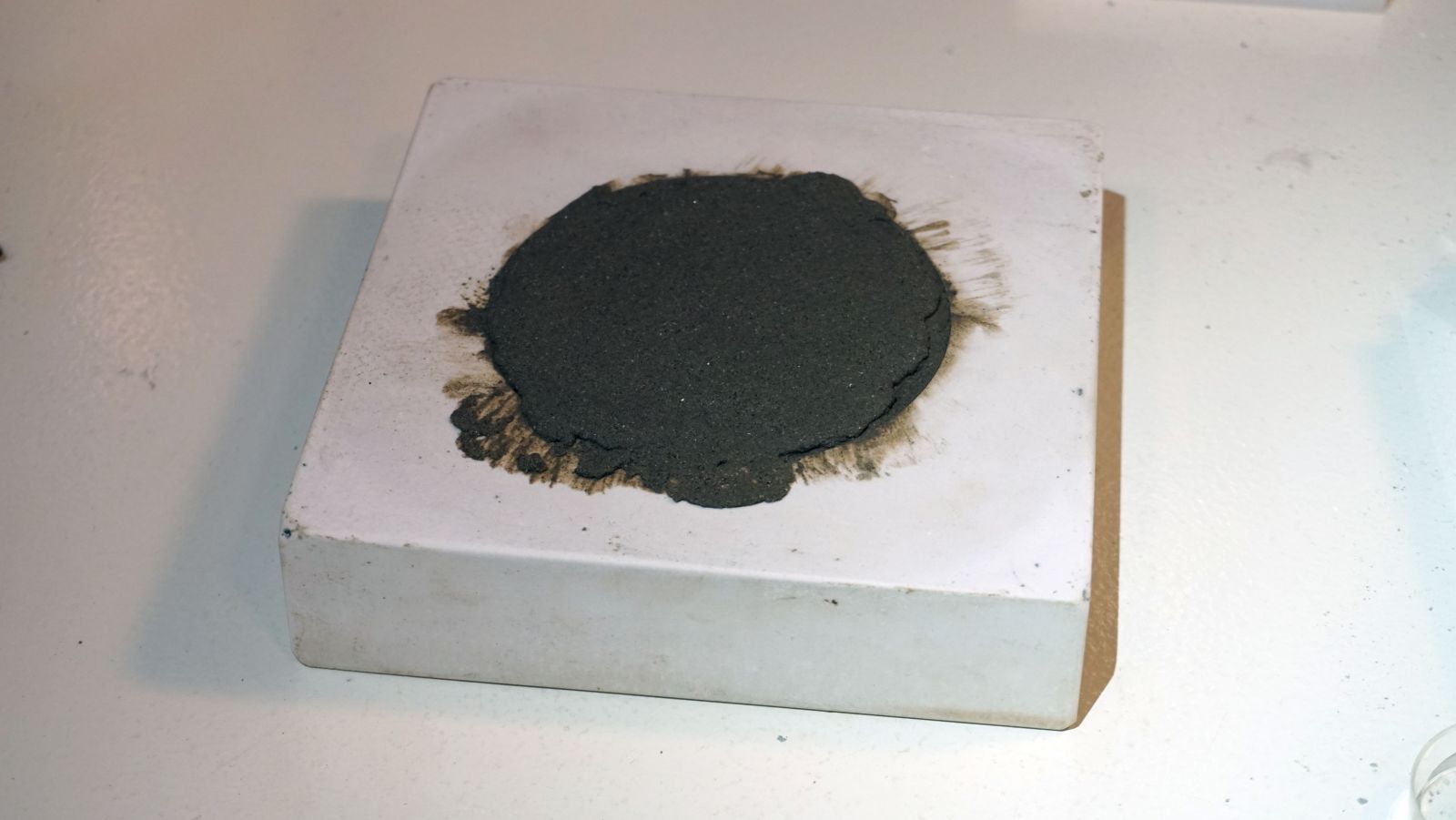
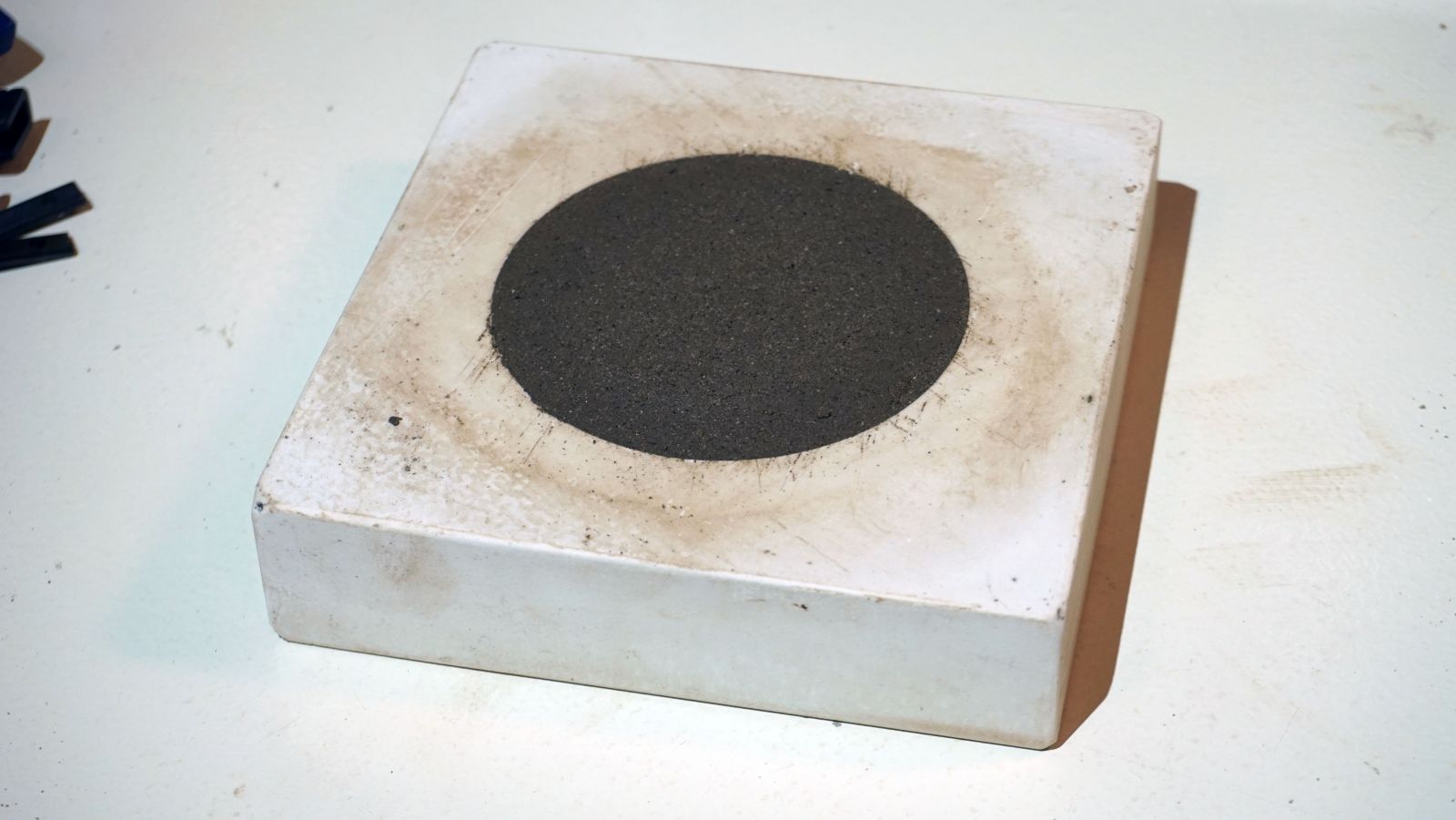
Unfortunately this didn't work either. I was never able to get the thing out. Maybe once it was completely dry it might have fallen out, but I wasn't going to wait for that. Again, I just ended up making thicker clay and pressing it into petri dishes instead.
So, I first fired it to a cone 06, which is 1830 F. This really surprised me when I took it out of the kiln. As you can see it turned red and almost looks like a red brick.
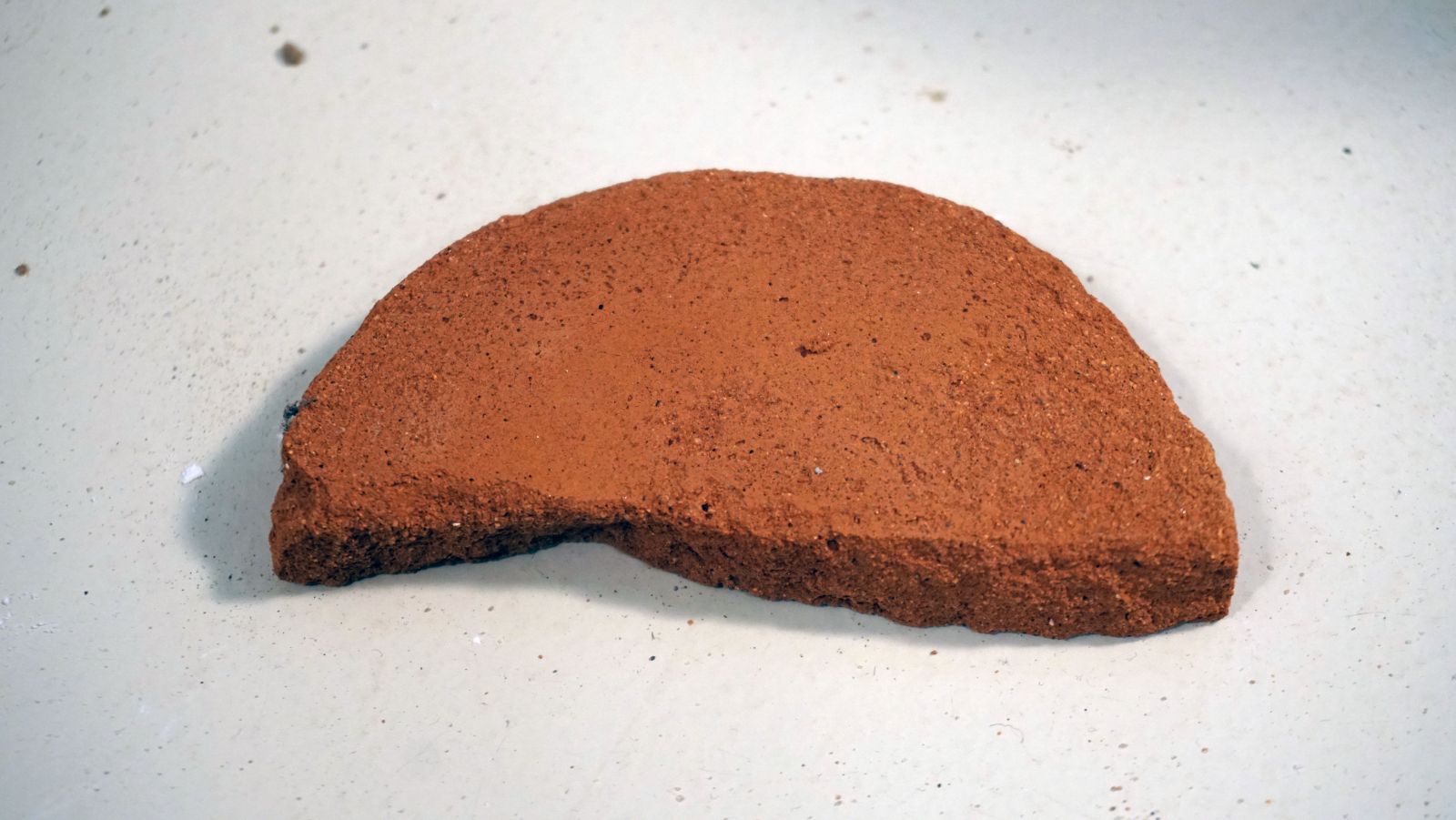
It clearly wasn't fused yet, because it crumbled with not too much pressure, so I decided to take it up to a cone 8 (2305 F).
Now this time I took it out and it was very dark, and slightly melted, so that was a bit too hot.
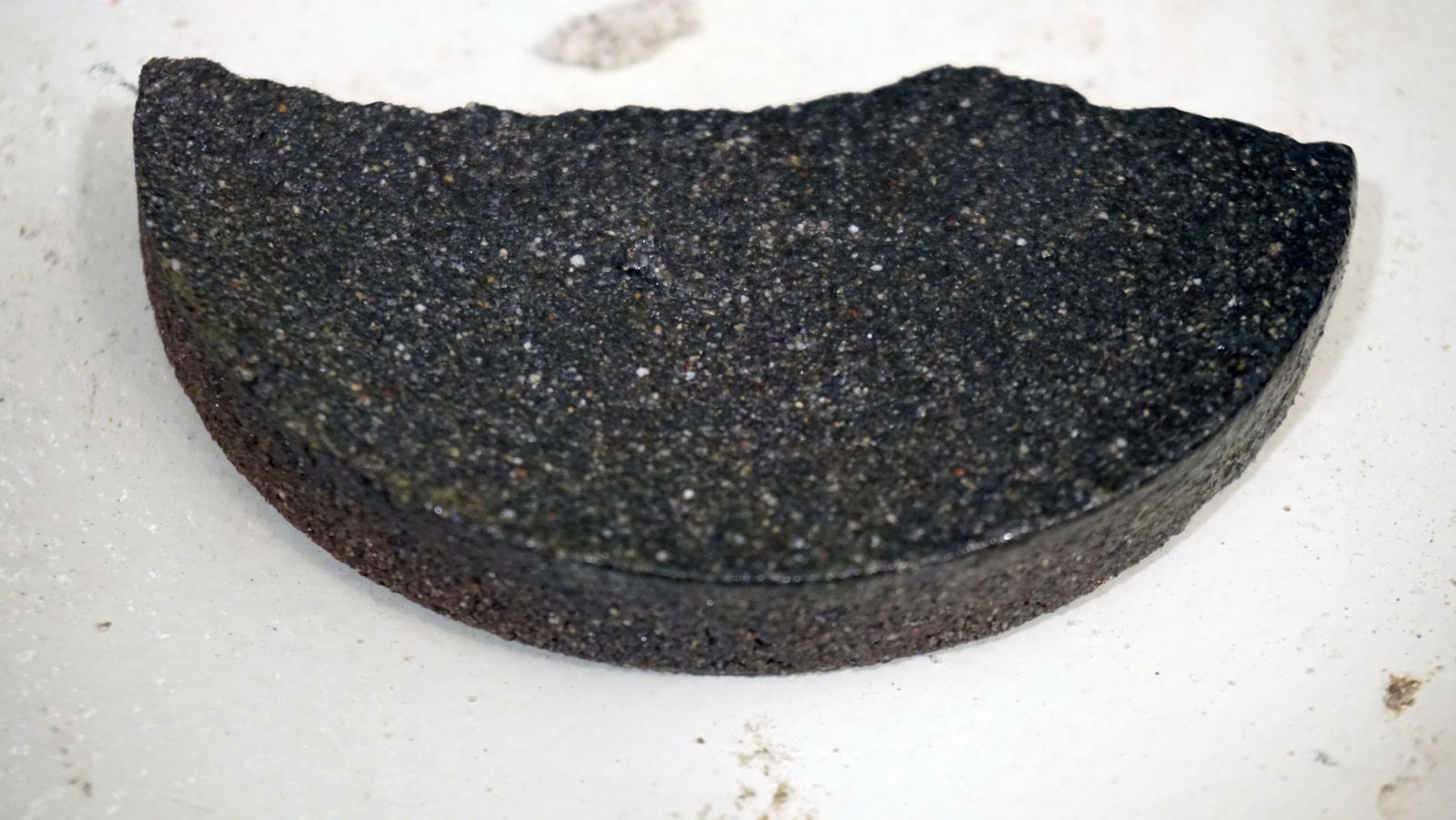
This did not absorb water much at all, and looking at it under a microscope, you can see why.
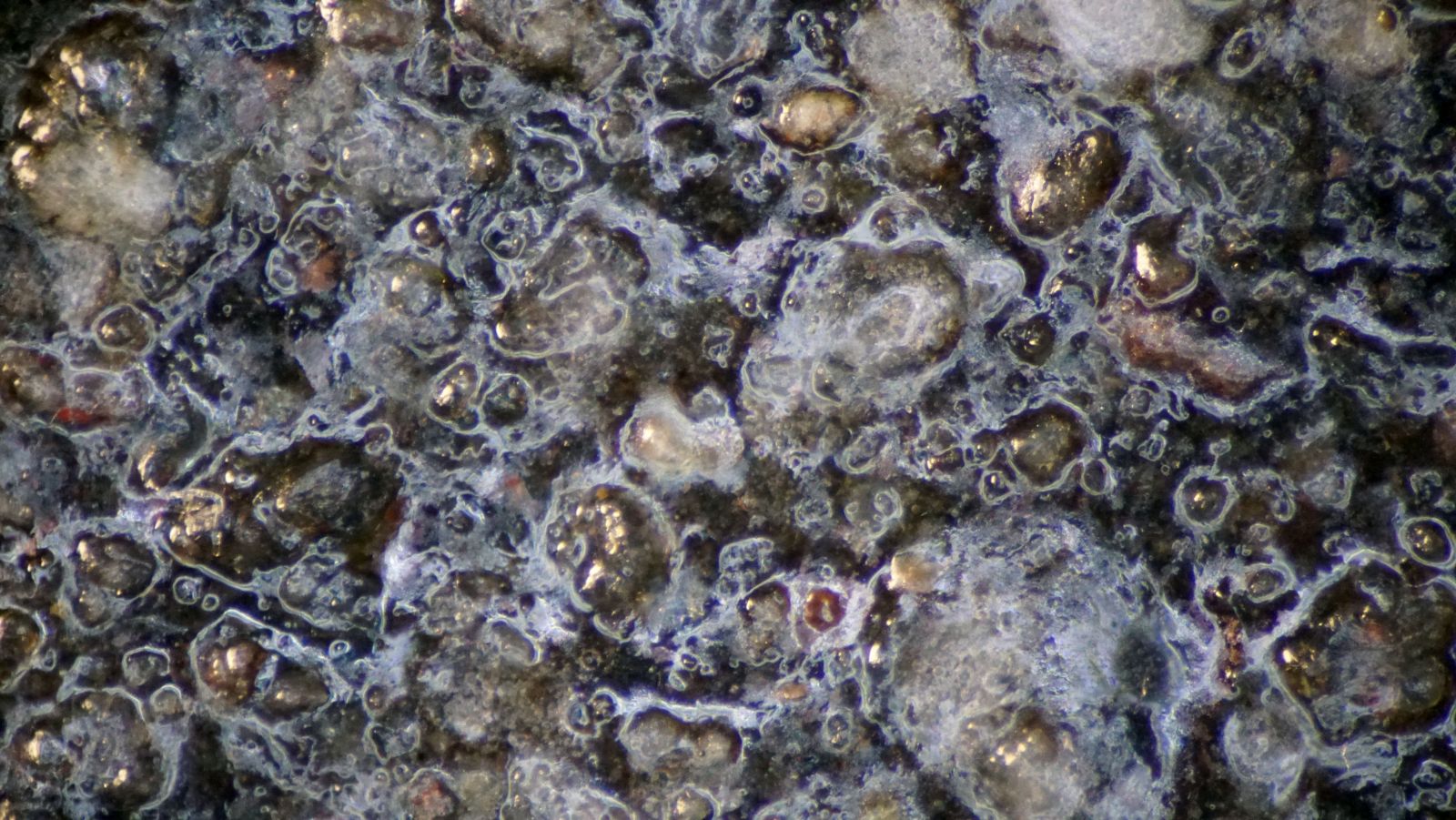
It melted so much, it became almost like glass and is no longer porous at all.
Before trying anymore temperatures, I decided to try firing some of the orangish sand from a place in the desert called Glamis. This area is pretty unique with all its sand dunes, making it a popular place for offroading.
Here is what this sand looks like naturally.
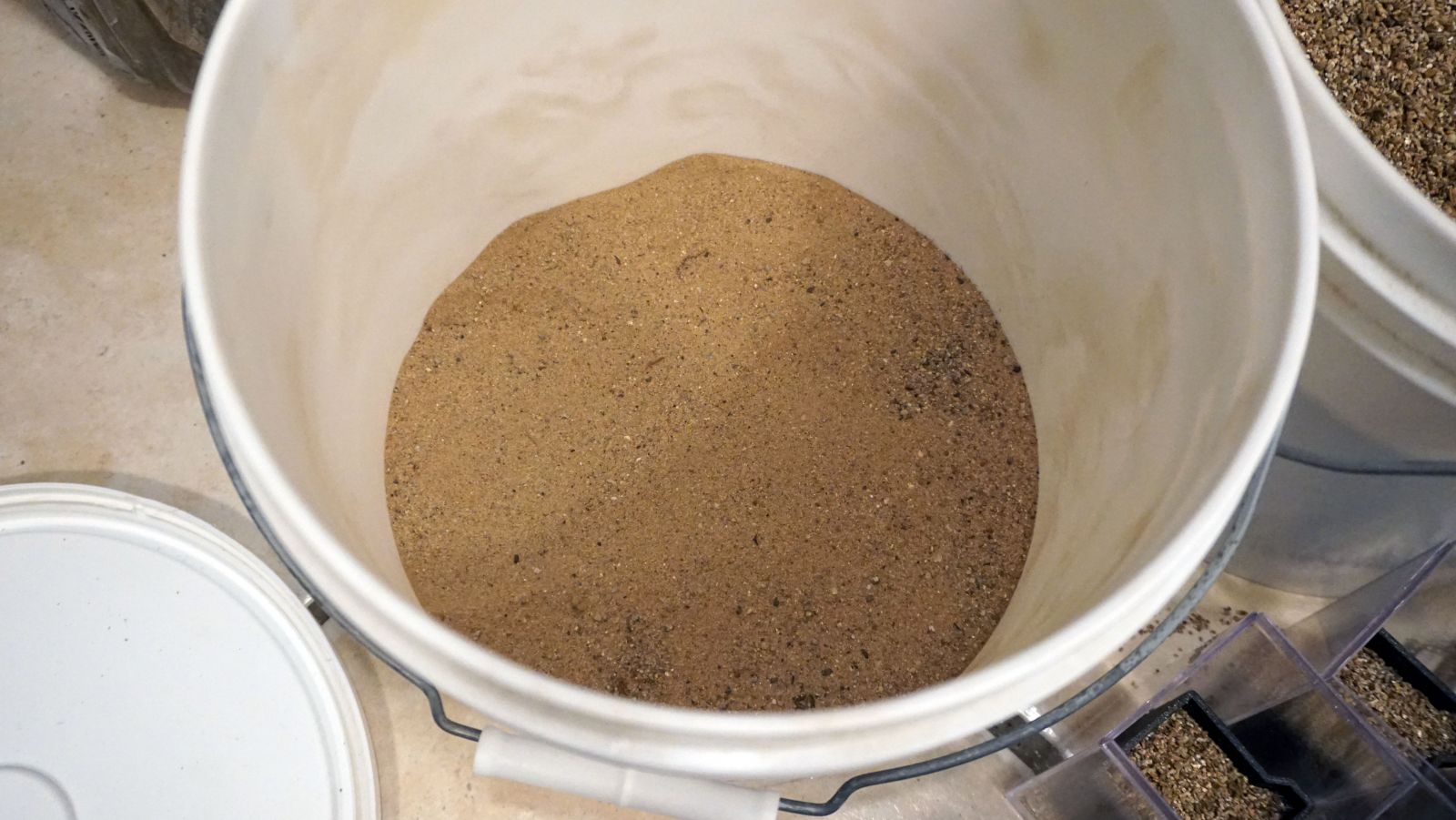
Here I've sifted it to a fine sand and a silt/clay mixture.
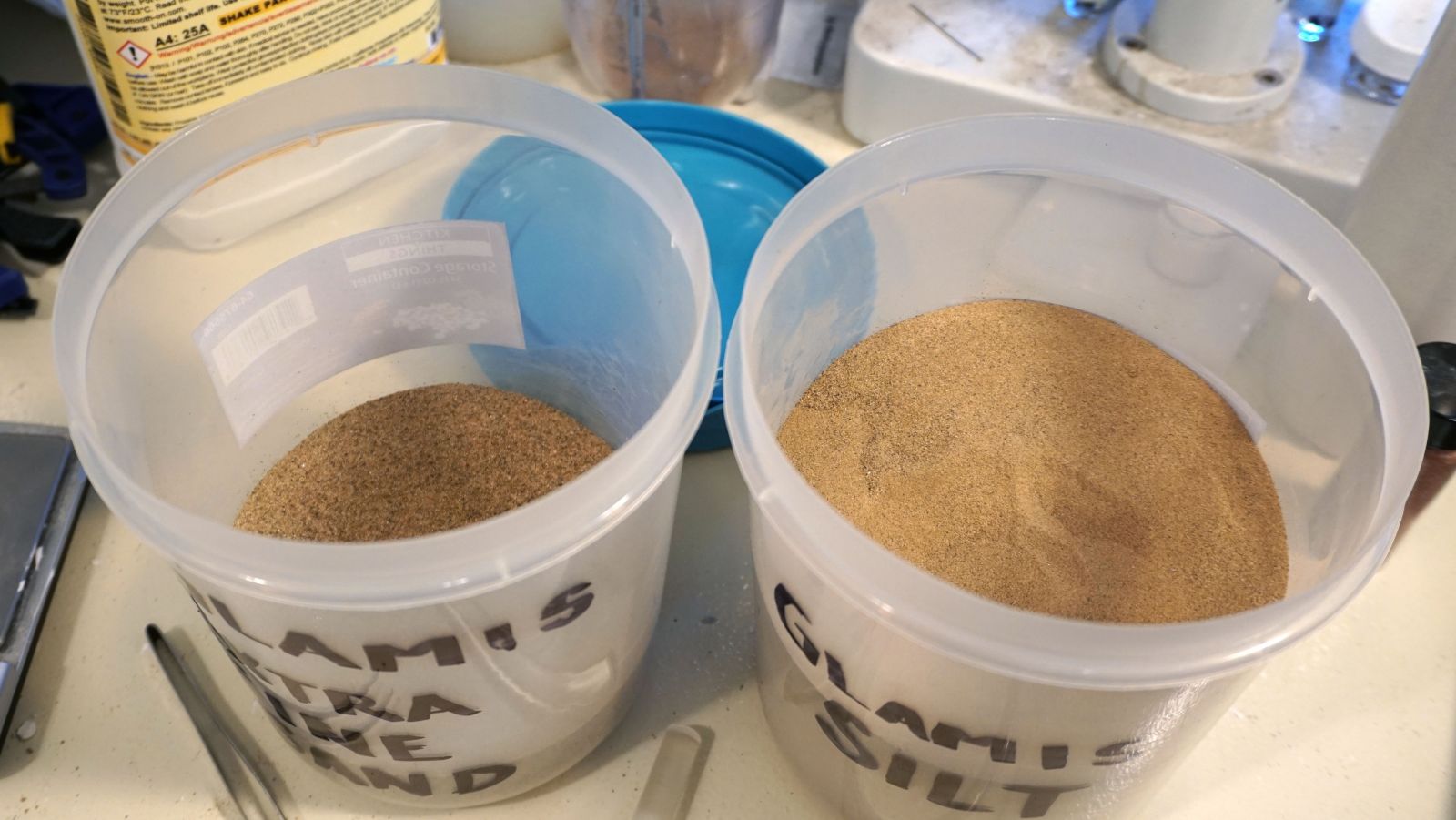
Using some of the silt/clay mix, I made a tile and fired it at 2300 F.
To my surprise when I took it out, it was white with black speckles, and looked exactly like the resin I use for some of my nests. It also felt and looked very much like Ytong or cement.
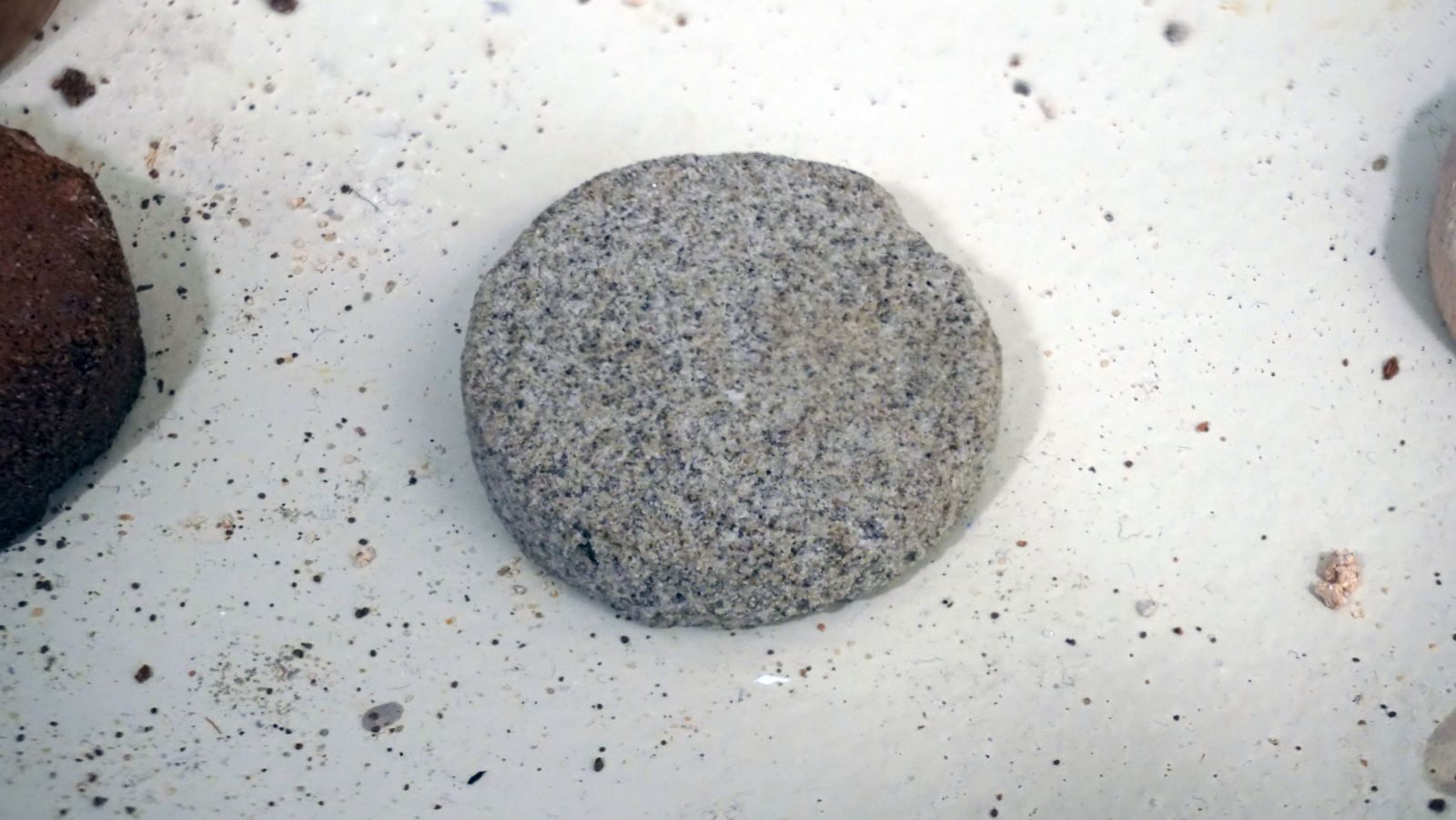
Here is a tile I made from the raw sand. As you can see, there were a lot more of the black particles making it look almost like granite.
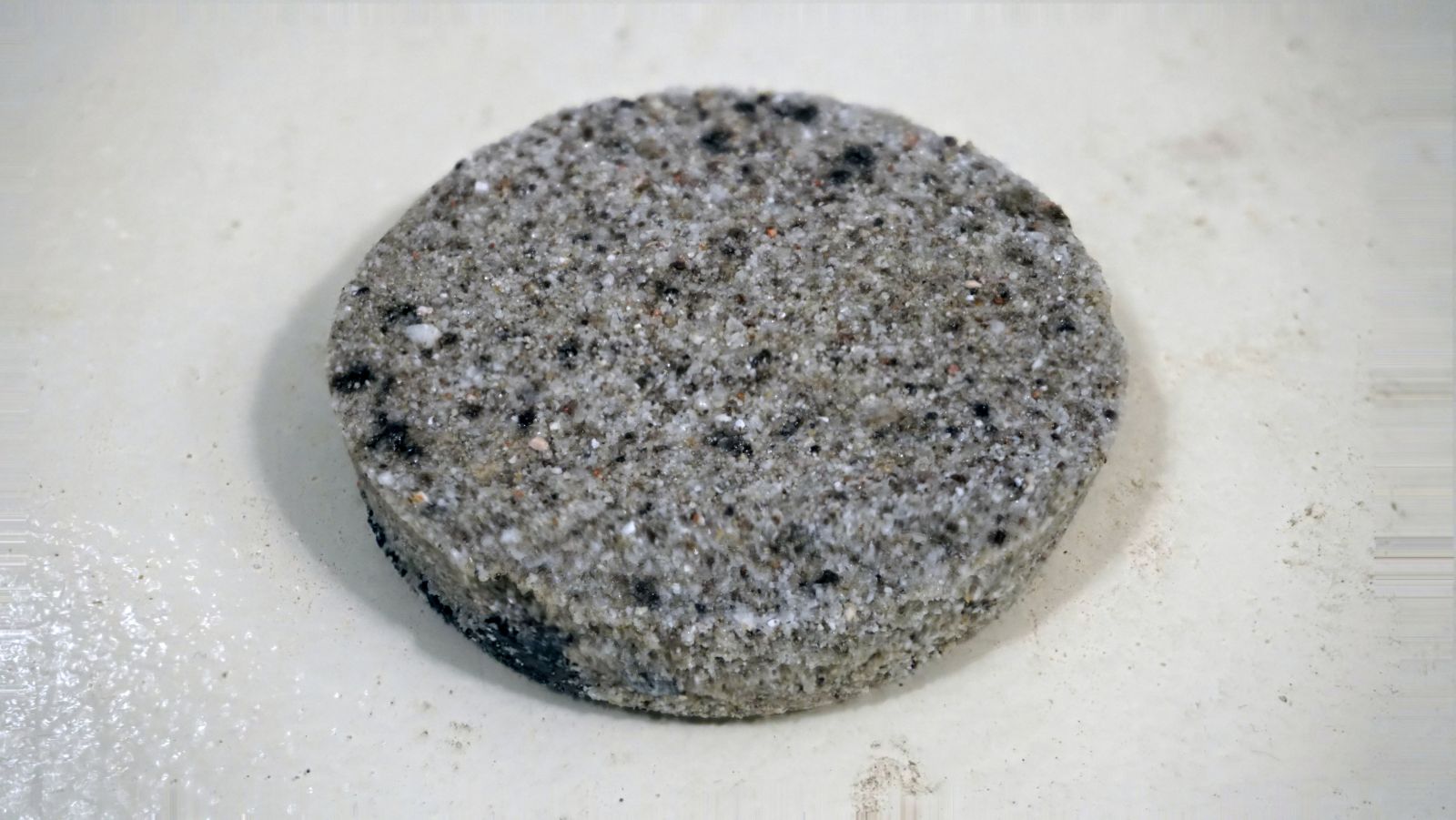
It definitely fired at the perfect temperature, because it is hard as a rock, yet doesn't look melted. As you can see here in these microscope pictures, just the right amount of some mineral melted enough to basically glue all the sand particles together.
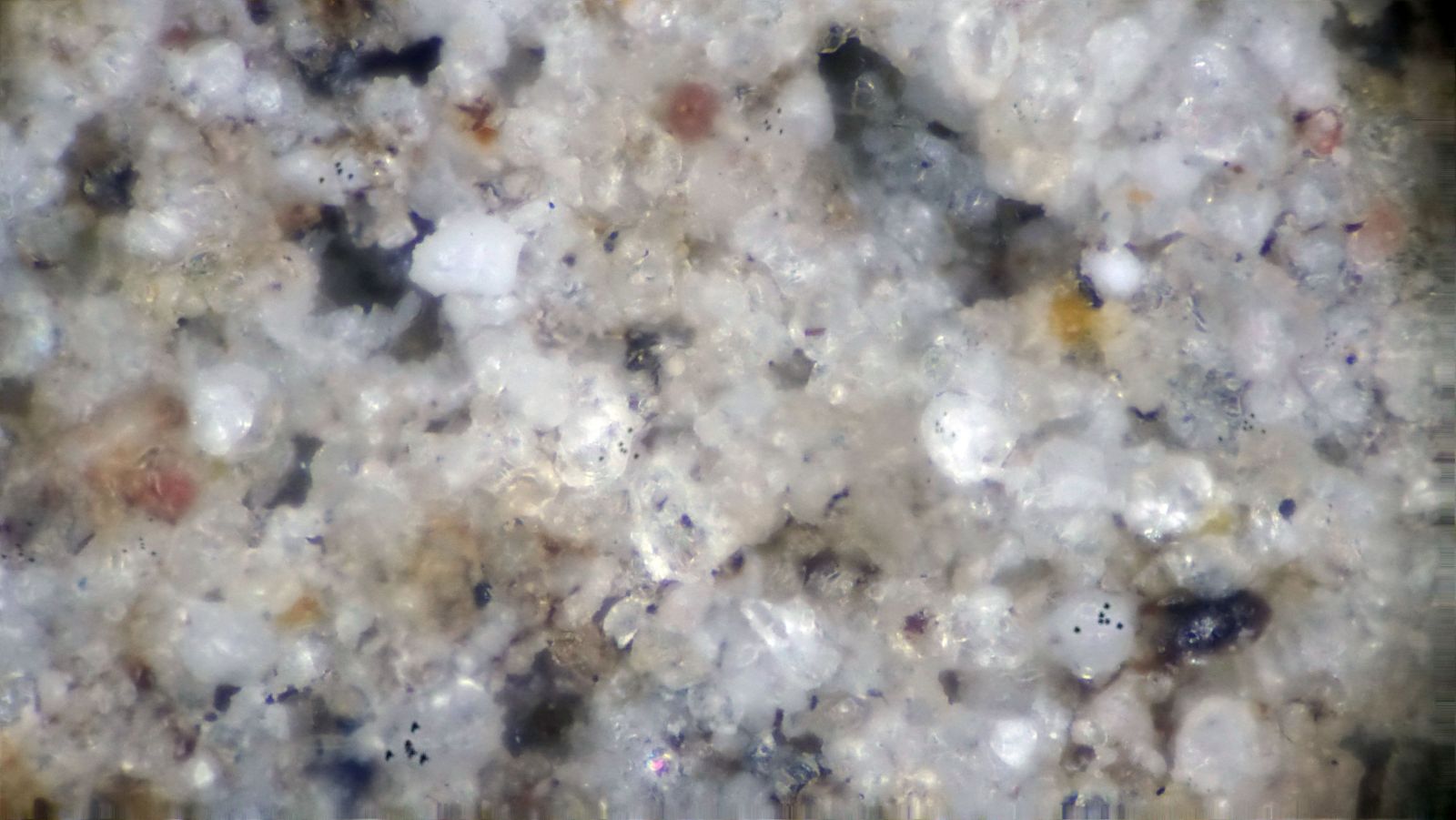
I tried an absorption test on it, and this thing absorbs like crazy! It was saturated almost instantly.
I'm curious now if I just fired this sand at just the right temperature, or if there is something unique about it. I'll be doing more experiments to find out for sure before hauling a bunch more of this sand home.

I first tried using my tile mold again, and since it was slightly sandy, I knew it wouldn't shrink as much as that pure clay slip did. I also got a lot of the water out of it beforehand.



Unfortunately this didn't work either. I was never able to get the thing out. Maybe once it was completely dry it might have fallen out, but I wasn't going to wait for that. Again, I just ended up making thicker clay and pressing it into petri dishes instead.
So, I first fired it to a cone 06, which is 1830 F. This really surprised me when I took it out of the kiln. As you can see it turned red and almost looks like a red brick.

It clearly wasn't fused yet, because it crumbled with not too much pressure, so I decided to take it up to a cone 8 (2305 F).
Now this time I took it out and it was very dark, and slightly melted, so that was a bit too hot.

This did not absorb water much at all, and looking at it under a microscope, you can see why.

It melted so much, it became almost like glass and is no longer porous at all.
Before trying anymore temperatures, I decided to try firing some of the orangish sand from a place in the desert called Glamis. This area is pretty unique with all its sand dunes, making it a popular place for offroading.
Here is what this sand looks like naturally.

Here I've sifted it to a fine sand and a silt/clay mixture.

Using some of the silt/clay mix, I made a tile and fired it at 2300 F.
To my surprise when I took it out, it was white with black speckles, and looked exactly like the resin I use for some of my nests. It also felt and looked very much like Ytong or cement.

Here is a tile I made from the raw sand. As you can see, there were a lot more of the black particles making it look almost like granite.

It definitely fired at the perfect temperature, because it is hard as a rock, yet doesn't look melted. As you can see here in these microscope pictures, just the right amount of some mineral melted enough to basically glue all the sand particles together.

I tried an absorption test on it, and this thing absorbs like crazy! It was saturated almost instantly.
I'm curious now if I just fired this sand at just the right temperature, or if there is something unique about it. I'll be doing more experiments to find out for sure before hauling a bunch more of this sand home.
- drtrmiller, kellakk, Jonathan21700 and 4 others like this
#116
 Offline
-
Posted April 19 2018 - 3:42 PM
Offline
-
Posted April 19 2018 - 3:42 PM
Do you buy the sand you pour into your resin nests?
#117
 Offline
-
Posted April 19 2018 - 7:07 PM
Offline
-
Posted April 19 2018 - 7:07 PM
Do you buy the sand you pour into your resin nests?
Some of it.
#118
 Offline
-
Posted April 20 2018 - 6:18 AM
Offline
-
Posted April 20 2018 - 6:18 AM
Here I mixed low-fire clay (top) and low-fire talc-based clay (bottom) with 20%, 50%, and 80% Glamis sand/silt and fired it at 1830 F.
The more sand that was added, the more orange and weaker it got, and the more absorbent it got.
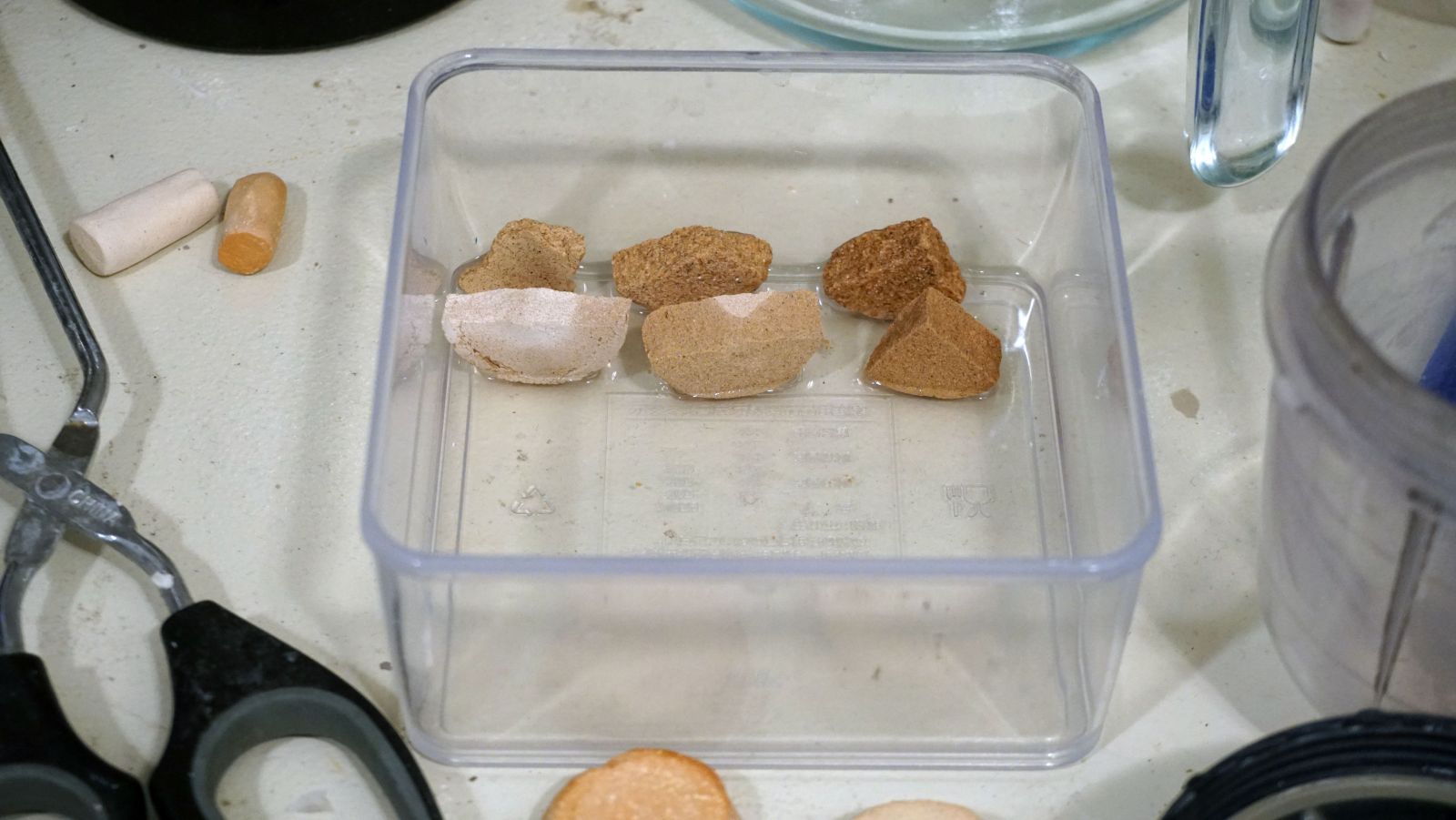
I then took the same thing and fired it at 2300 F. Obviously low-fire clay melts at those high temperatures, which you can see happened.
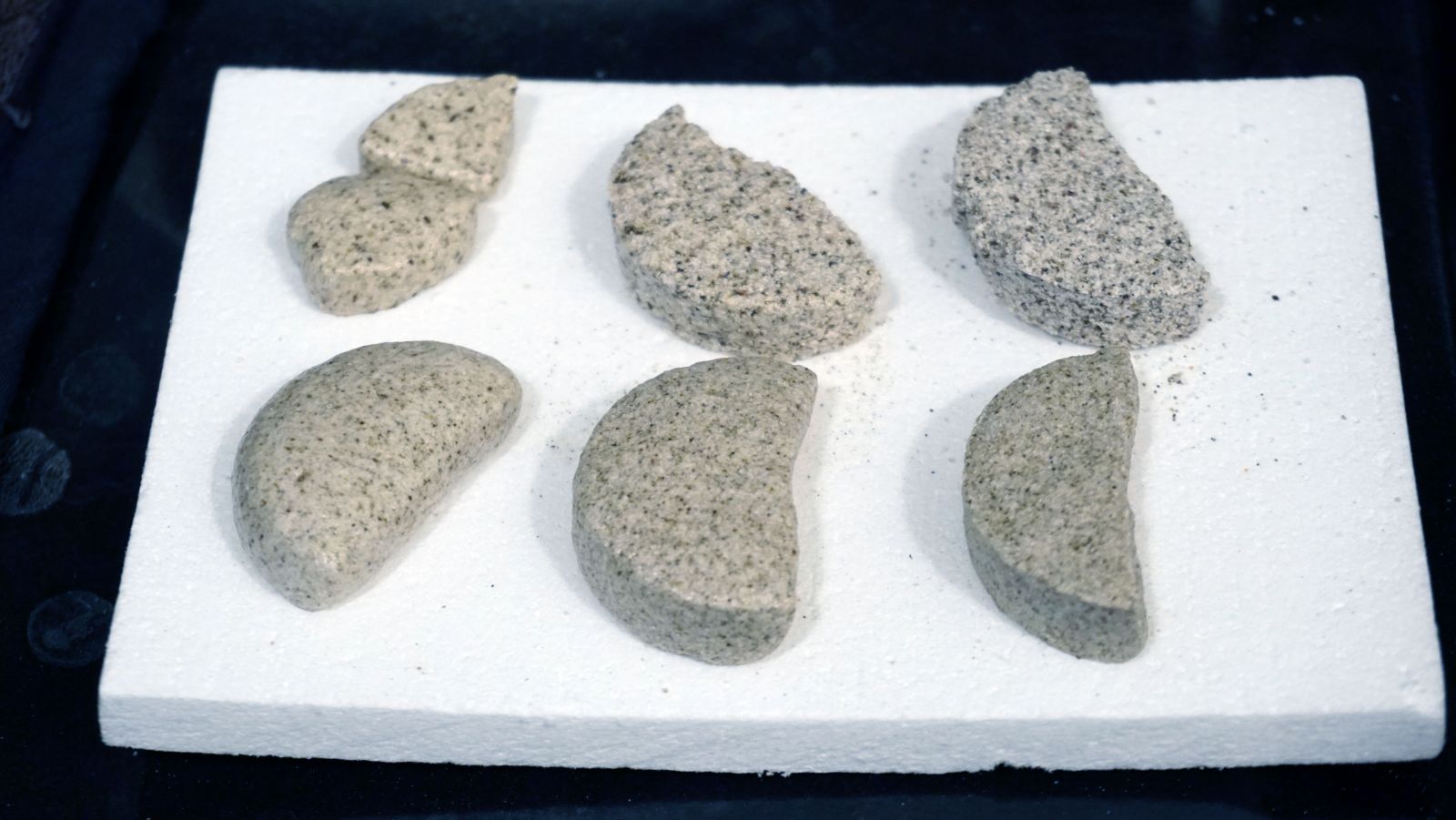
The melted ones turned white, hardly absorbed any water at all, and were very hard. They were obviously slightly more absorbent and weaker as more sand was added too.
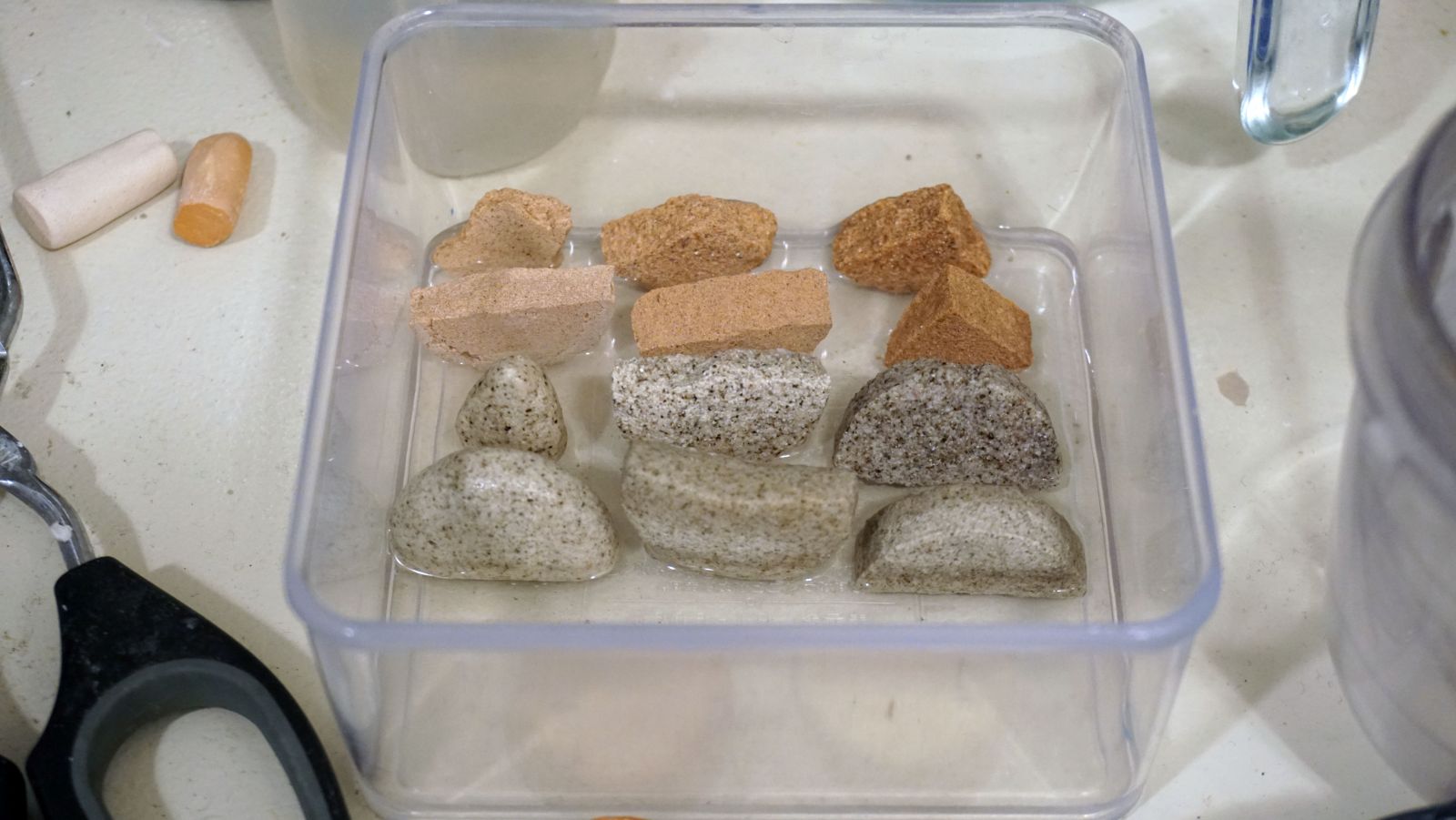
Still nothing of any use made here.
The more sand that was added, the more orange and weaker it got, and the more absorbent it got.

I then took the same thing and fired it at 2300 F. Obviously low-fire clay melts at those high temperatures, which you can see happened.

The melted ones turned white, hardly absorbed any water at all, and were very hard. They were obviously slightly more absorbent and weaker as more sand was added too.

Still nothing of any use made here.
- sirjordanncurtis likes this
#119
 Offline
-
Posted April 20 2018 - 1:45 PM
Offline
-
Posted April 20 2018 - 1:45 PM
Interesting read Drew. I also have been experimenting with ceramics the past 2 weeks looking for optimal hydration methods. I really enjoy how well it wicks and is eager to move water, and also after a proper firing will last longer than any nest you put it in.
I am in the process of adapting old designs into using it.
I am in the process of adapting old designs into using it.
Owner and operator of Ant-topia, find me on Facebook at https://m.facebook.com/ant-topia
#120
 Offline
-
Posted April 20 2018 - 4:05 PM
Offline
-
Posted April 20 2018 - 4:05 PM
Yeah, it's almost indestructible.
Also tagged with one or more of these keywords: formicarium, container, out world, enclosure, how-to, diy, design, nest, dspdrew, tutorial
 |
Market Place →
General Market Place →
FormiFactory's Nest ShopStarted by FormiFactory , Dec 8 2025 |
|

|
|
 |
Off-Topic →
General Off-Topic →
3D printing Corner!Started by OwlThatLikesAnts , Nov 10 2025 |
|

|
|
Market Place →
General Market Place →
Possible THA Formicarium for sale in ArizonaStarted by sacs4010 , Aug 20 2025 |
|

|
||
Ant Keeping →
General Ant Keeping →
Leaving tomorrow, don't know what to do with Brachymyrmex depilisStarted by AntBooper600 , Jul 20 2025 |
|

|
||
Market Place →
General Market Place →
Temnothorax's Formicarium StopStarted by Temno , Jun 30 2025 |
|

|
1 user(s) are reading this topic
0 members, 1 guests, 0 anonymous users


